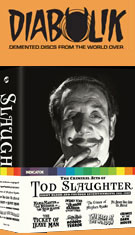
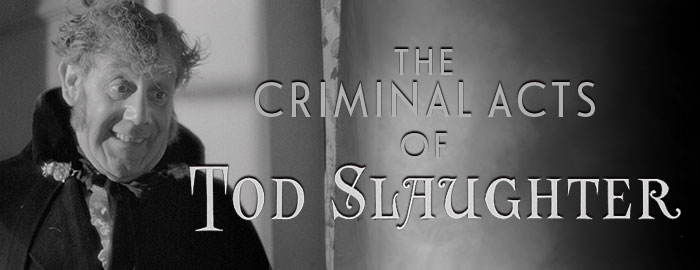
MARIA MARTEN, OR THE MURDER IN THE RED BARN
B&W, 1935, 66 mins. 56 secs.
Directed by Milton Rosmer
Starring Tod Slaughter, Sophie Stewart, D.J. Williams, Eric Portman, Clare Greet
SWEENEY TODD: THE DEMON BARBER OF FLEET STREET
B&W, 1936, 68 mins. 13 secs.
Directed by George King
Starring Tod Slaughter, Stella Rho, John Singer, Eve Lister, Bruce Seton
THE CRIMES OF STEPHEN HAWKE
B&W, 1936, 69 mins. 14 secs.
Directed by George King
Starring Tod Slaughter, Marjorie Taylor, D.J. Williams, Eric Portman
IT'S NEVER TOO LATE TO MEND
B&W, 1937, 67 mins. 6 secs.
Directed by David MacDonald
Starring Tod Slaughter, Jack Livesey, Marjorie Taylor, Ian Colin, Laurence Hanray, D.J. Williams
THE TICKET OF LEAVE MAN
B&W, 1937, 70 mins. 49 secs.
Directed by George King
Starring Tod Slaughter, John Warwick, Marjorie Taylor
SEXTON BLAKE AND THE HOODED TERROR
B&W, 1938, 69 mins. 21 secs.
Directed by George King
Starring Tod Slaughter, George Curzon, Greta Gynt, Tony Sympson, David Farrar, Charles Oliver
THE FACE AT THE WINDOW
B&W, 1939, 64 mins. 41 secs.
Directed by George King
Starring Tod Slaughter, Marjorie Taylor, John Warwick, Aubrey Mallalieu, Robert Adair
CRIMES AT THE DARK HOUSE
B&W, 1940, 68 mins. 42 secs.
Directed by David MacDonald
Starring Tod Slaughter, Sylvia Marriott, Hilary Eaves, Geoffrey Wardwell, Hay Petrie
Indicator (Blu-ray) (US/UK R0 HD)
While Universal was at the 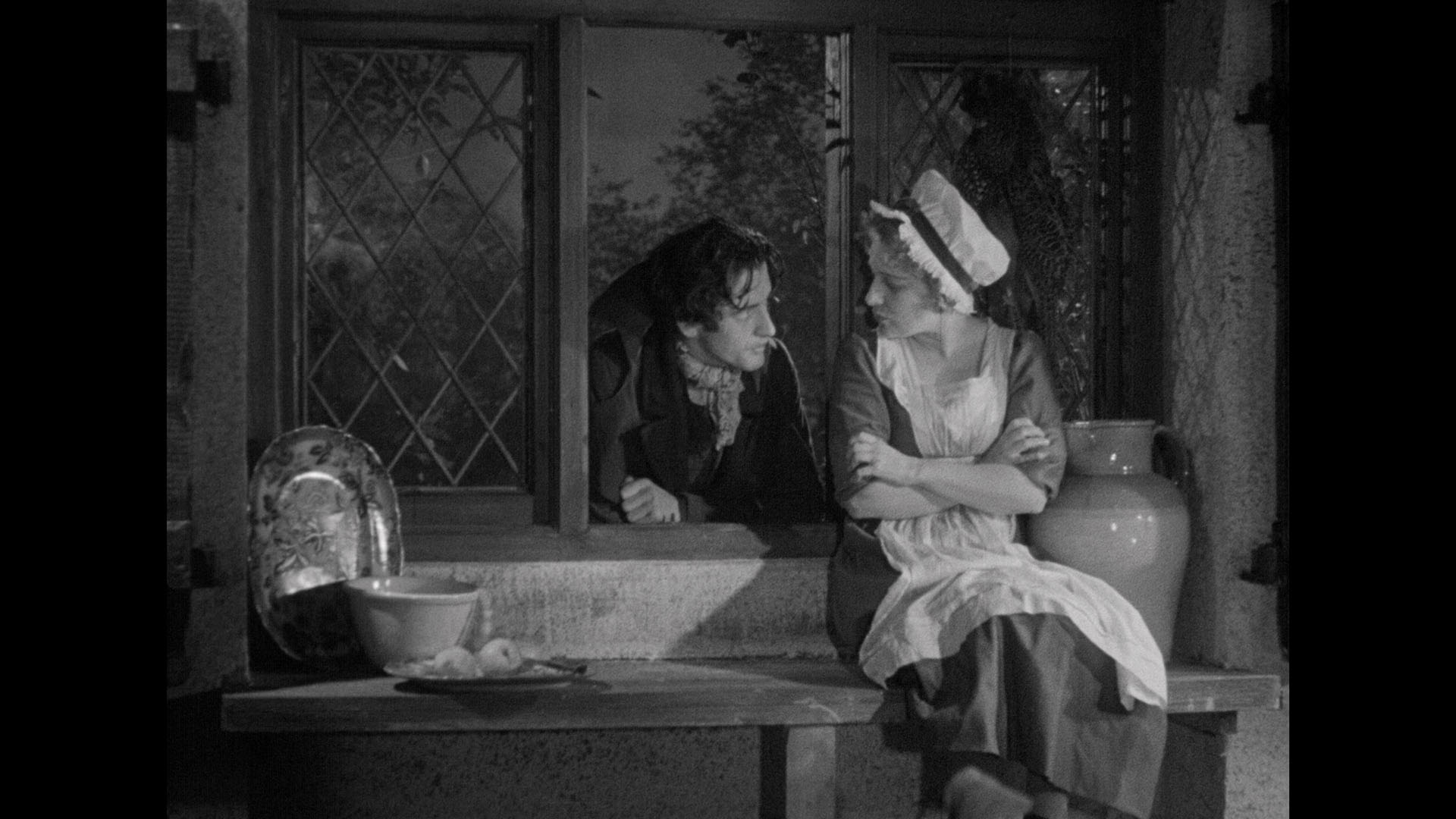 height of its monster movie popularity around the world in
height of its monster movie popularity around the world in 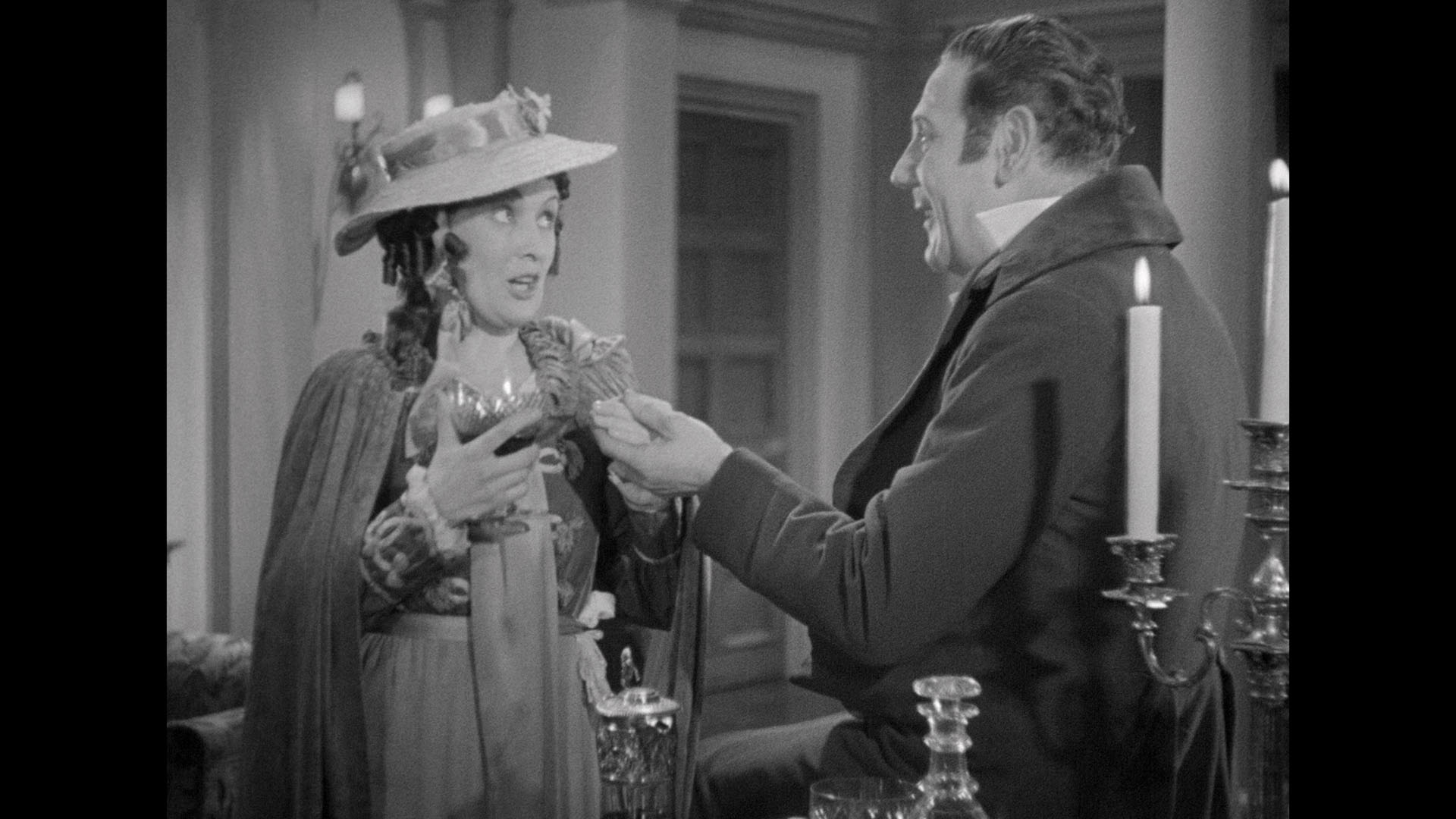 the mid-'30s, England saw the closest thing to a horror icon it would have to a true homegrown genre for decades coming off the theater stage: Tod Slaughter. Born Norman Carter Slaughter (with a last name that seemed destined for macabre showbiz), he started off as a traditional leading man but found his true calling closer to middle age as he showed a theatrical flair in front of the footlights in Victorian "blood-and-thunder" melodramas. Sort of a more traditional and far less explicit cousin to the Grand Guignol shows in France, these productions were a logical choice to bring to the screen as Slaughter vehicles with the most period atmosphere possible given their limited budgets. Slaughter's larger-than-life persona can be an acquired taste for some, but the sheer fun to be had with these films is vast if you approach them in the right spirit. From 1935 to 1940, he cranked out eight memorable starring productions (with a couple of non-genre acting roles sprinkled in between), all of which hit the quasi-public domain circuit on home video in the '80s. The sources for these VHS and eventual DVD releases were dire to say the least, but they were still enough to earn plenty of curious new fans with their variations of Slaughter playing a seemingly respectable member of society who commits dreadful misdeeds under everyone's noses (usually with a young woman potentially caught in his clutches somehow). That widespread exposure for Slaughter's films created a strange viewing experience as you
the mid-'30s, England saw the closest thing to a horror icon it would have to a true homegrown genre for decades coming off the theater stage: Tod Slaughter. Born Norman Carter Slaughter (with a last name that seemed destined for macabre showbiz), he started off as a traditional leading man but found his true calling closer to middle age as he showed a theatrical flair in front of the footlights in Victorian "blood-and-thunder" melodramas. Sort of a more traditional and far less explicit cousin to the Grand Guignol shows in France, these productions were a logical choice to bring to the screen as Slaughter vehicles with the most period atmosphere possible given their limited budgets. Slaughter's larger-than-life persona can be an acquired taste for some, but the sheer fun to be had with these films is vast if you approach them in the right spirit. From 1935 to 1940, he cranked out eight memorable starring productions (with a couple of non-genre acting roles sprinkled in between), all of which hit the quasi-public domain circuit on home video in the '80s. The sources for these VHS and eventual DVD releases were dire to say the least, but they were still enough to earn plenty of curious new fans with their variations of Slaughter playing a seemingly respectable member of society who commits dreadful misdeeds under everyone's noses (usually with a young woman potentially caught in his clutches somehow). That widespread exposure for Slaughter's films created a strange viewing experience as you 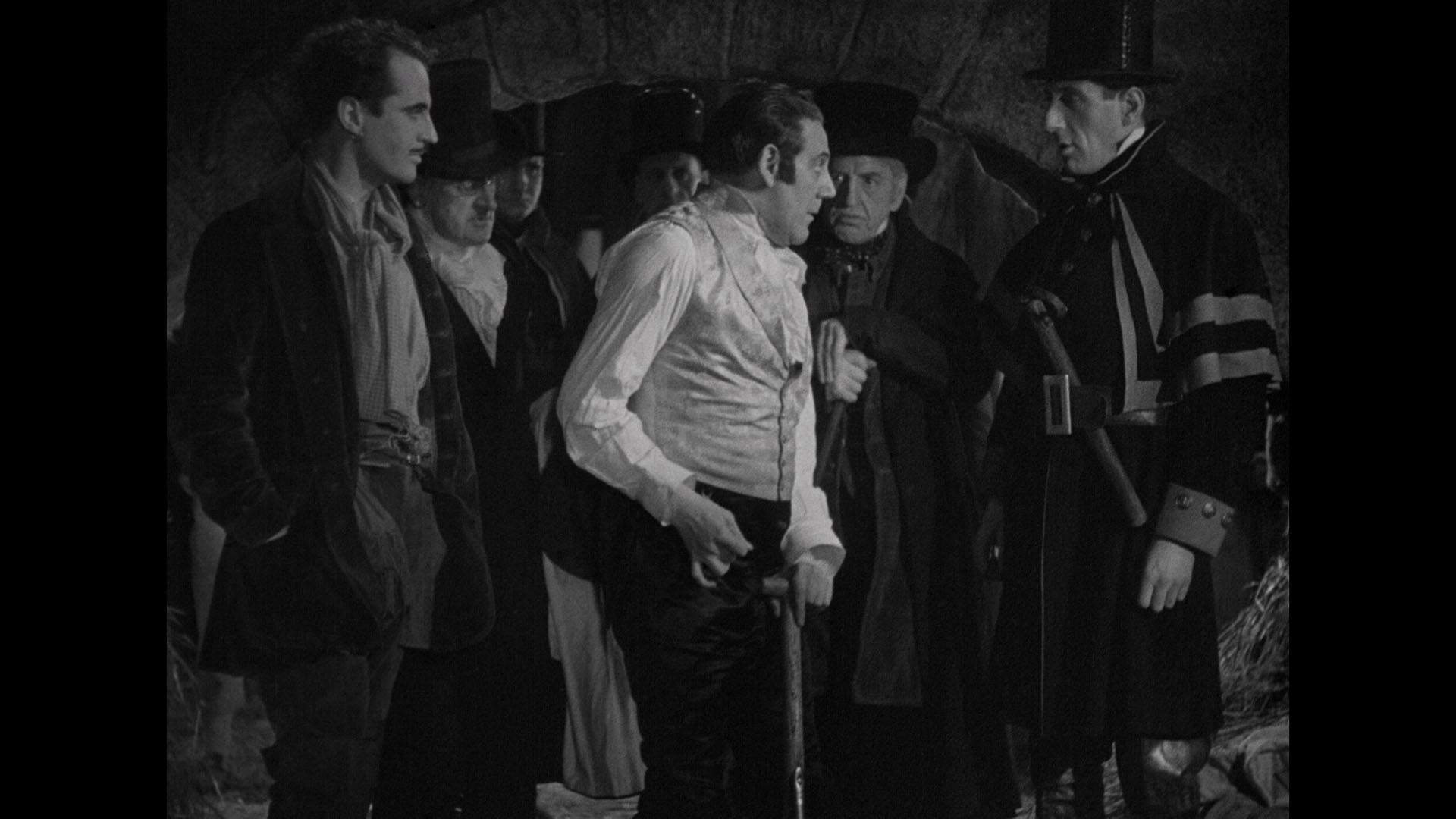 tried to squint through all the print damage and blurriness (not to mention scratchy, muffled audio) to enjoy these films that often stretched the definition of what a '30s horror
tried to squint through all the print damage and blurriness (not to mention scratchy, muffled audio) to enjoy these films that often stretched the definition of what a '30s horror 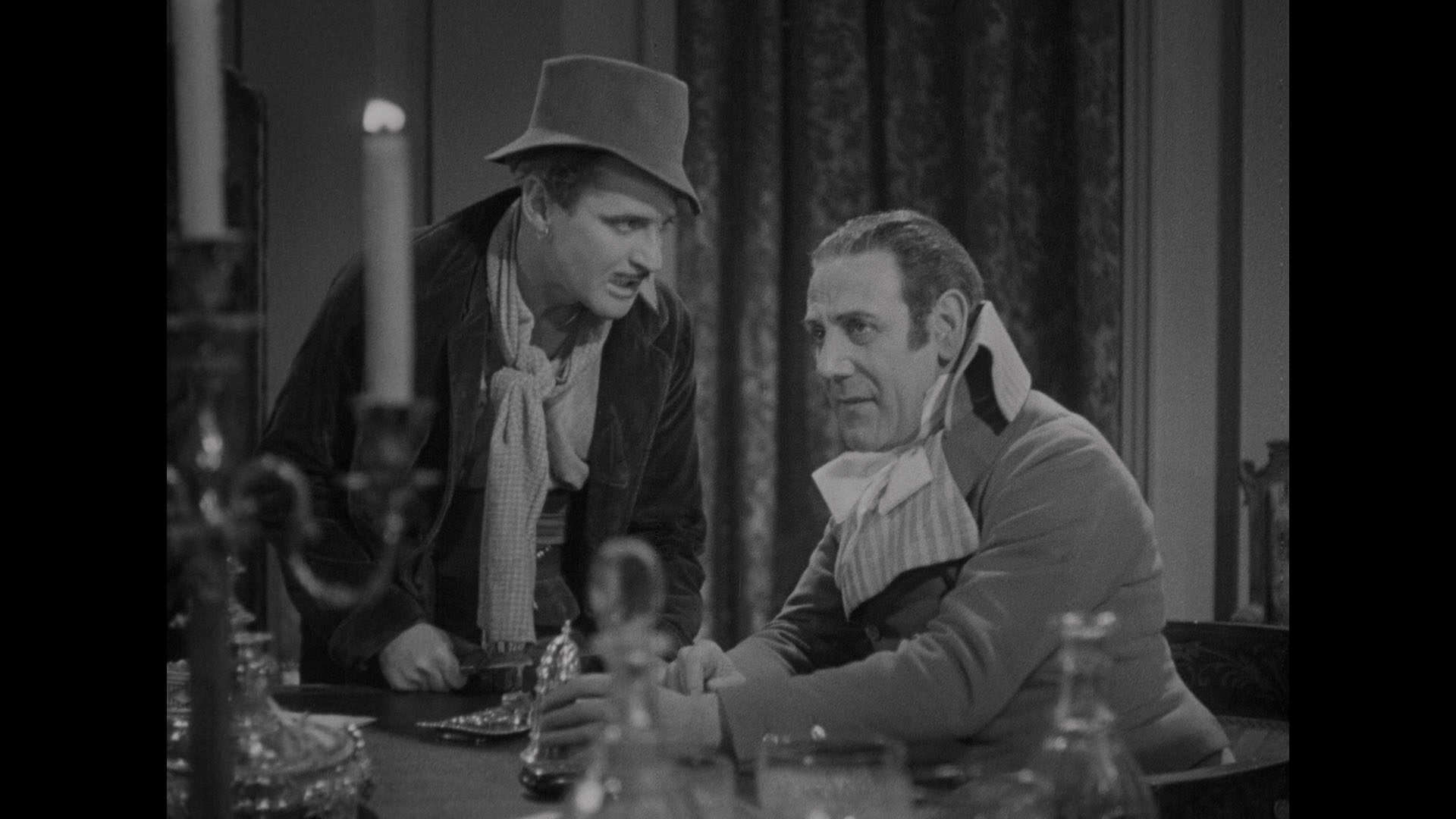 film could actually be. Now Slaughter's peak period can finally be seen in its original, barnstorming majesty with the much-needed 2023 Blu-ray set from Indicator, The Criminal Acts of Tod Slaughter: Eight Blood-and-Thunder Entertainments, 1935-1940 (a limited edition box set of 6,000 numbered units for the U.K. and U.S.) featuring miraculous restorations of the films themselves and extensive extras bound to increase appreciation for this truly unique entertainment figure. For the record, after a hiatus from the screen during World War II, Slaughter made a handful of additional films including two significant horror-ish melodramas, 1946's The Curse of the Wraydons and 1948's The Greed of William Hart, both of which belong to a different rights holder and are out on pretty good U.K. DVD editions.
film could actually be. Now Slaughter's peak period can finally be seen in its original, barnstorming majesty with the much-needed 2023 Blu-ray set from Indicator, The Criminal Acts of Tod Slaughter: Eight Blood-and-Thunder Entertainments, 1935-1940 (a limited edition box set of 6,000 numbered units for the U.K. and U.S.) featuring miraculous restorations of the films themselves and extensive extras bound to increase appreciation for this truly unique entertainment figure. For the record, after a hiatus from the screen during World War II, Slaughter made a handful of additional films including two significant horror-ish melodramas, 1946's The Curse of the Wraydons and 1948's The Greed of William Hart, both of which belong to a different rights holder and are out on pretty good U.K. DVD editions.
Disc one starts off with a bang with Slaughter's debut and one of his best, Maria Marten, or The Murder in the Red Barn, often released as simply Murder in the Red Barn. Based on a notorious real-life murder case and popular Victorian play, the proceedings kick off on a delightful note with our characters being introduced on a stage and no doubt left whatsoever about which ones are good versus evil. In the 1820s Suffolk countryside, the wicked and duplicitous Squire William Corder (Slaughter) makes his moves on the much younger Maria Martens (Stewart) during a community barn dance, in front of her parents and another potential suitor, gypsy Carlos (future Powell and Pressburger staple Portman). The evening ends badly with Carlos' palm-reading mother getting chucked out after foretelling Corder's death by hanging, and a week later, Corder welcomes Maria into his home for an evening together with her lying about going to choir practice for cover. Some heavy wine consuming and coitus ensue, which turns out to leave Maria pregnant and her parents thinking Carlos is responsible. Marita decides to hold Corder to his promises of marriage and a move to London, but he still plans to marry a wealthy older woman to help relieve his extensive gambling debts. When Maria disappears, the accusing fingers seem to be pointing at Carlos...
Pushing the seedy subject matter about as far as 1935 British film can go (i.e., not that far), this first outing for Slaughter instead bets everything on his performance and thankfully proves to be a winner thanks to his unabashed villainy. The film really springs to life whenever he appears, and though the story was very familiar territory by this point for anyone in the audience, established director Milton Rosmer (who normally handled more prestigious productions) keeps things moving along over the brief running time with a nice, spooky use of miniatures and sets.
Also 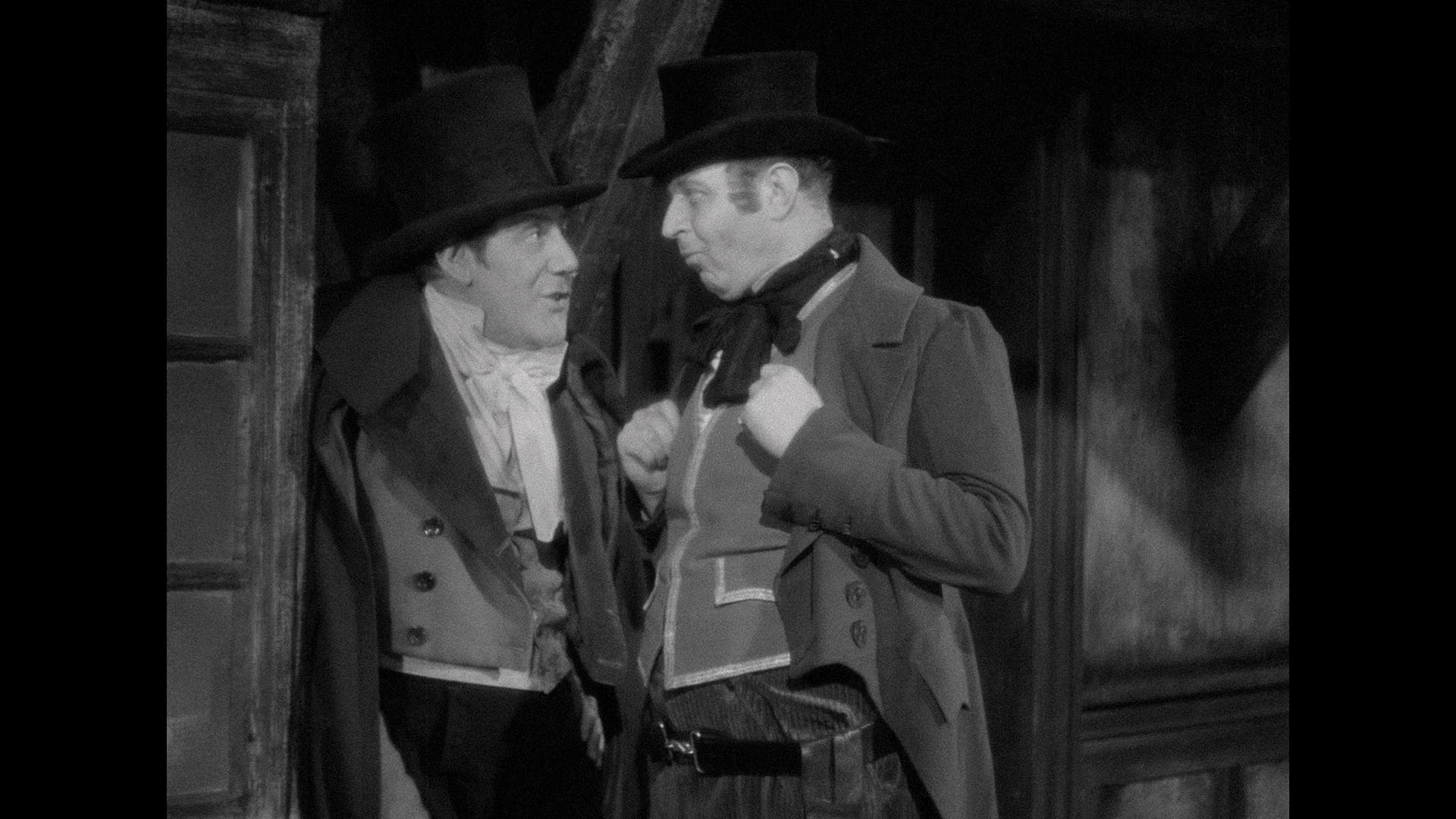 on the first disc is the role Slaughter played the most frequently over the course of his career (thousands of times, in fact), and the one most
on the first disc is the role Slaughter played the most frequently over the course of his career (thousands of times, in fact), and the one most 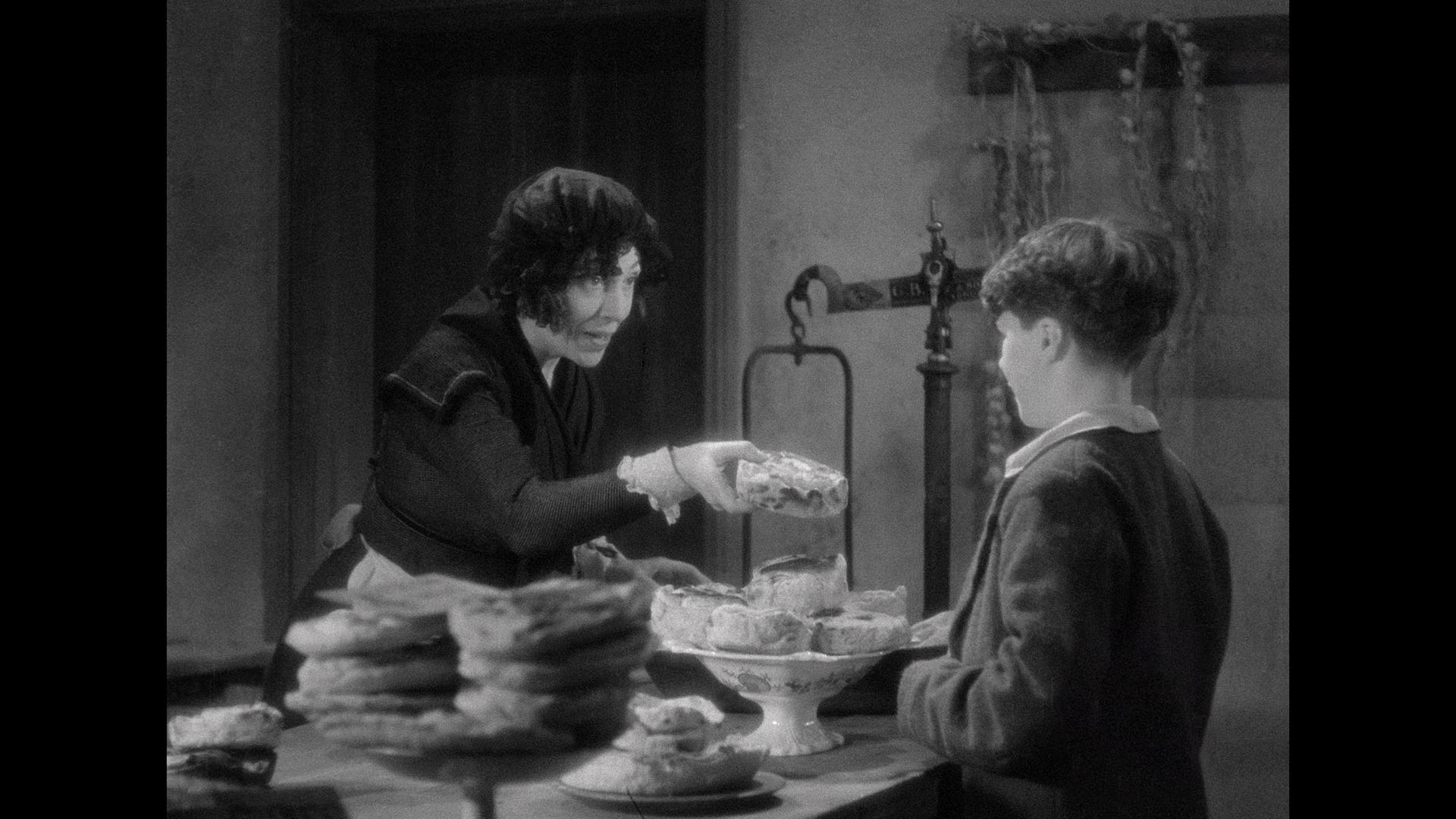 famous today for different reasons: 1936's Sweeney Todd: The Demon Barber of Fleet Street. The oft-told tale began as a penny dreadful saga about a razor-wielding barber who disposes of his customers' clients via the meat pie shop owner next door, and it had already been filmed in the silent era and become a stage favorite with Slaughter. Of course, the story would go on to inspire the legendary, Tony Award-winning musical by Stephen Sondheim (and its Tim Burton film adaptation), Andy Milligan's Bloodthirsty Butchers, and a 1997 made-for-cable version by John Schlesinger. This version adheres to the censorship standards of the time by omitting Todd's throat slittings (with unlucky patrons instead dumped directly to a bone-breaking fate through his barber chair trapdoor), and it's oblique about the exact cannibalistic nature of those eventual meat pies. Otherwise it's business as usual with unscrupulous dockside barber Sweeney Todd (Slaughter) becoming fixating on the young and pretty Joanna (Lister). While her boyfriend sailor Mark (Seton) is away at sea, Todd initiates a plan to line his pockets by luring in and killing wealthy customers to his Fleet Street stop, fleecing the bodies of any money or valuables, and using the shared basement with meat pie purveyor Mrs. Lovatt (Rho) (Lovett in other versions) to dispose of the evidence. Covering up his crimes proves to be tricky, especially when it comes to young barber apprentice Tobias (Singer) and a returning Mark who proves surprisingly resilient to any murder attempts.
famous today for different reasons: 1936's Sweeney Todd: The Demon Barber of Fleet Street. The oft-told tale began as a penny dreadful saga about a razor-wielding barber who disposes of his customers' clients via the meat pie shop owner next door, and it had already been filmed in the silent era and become a stage favorite with Slaughter. Of course, the story would go on to inspire the legendary, Tony Award-winning musical by Stephen Sondheim (and its Tim Burton film adaptation), Andy Milligan's Bloodthirsty Butchers, and a 1997 made-for-cable version by John Schlesinger. This version adheres to the censorship standards of the time by omitting Todd's throat slittings (with unlucky patrons instead dumped directly to a bone-breaking fate through his barber chair trapdoor), and it's oblique about the exact cannibalistic nature of those eventual meat pies. Otherwise it's business as usual with unscrupulous dockside barber Sweeney Todd (Slaughter) becoming fixating on the young and pretty Joanna (Lister). While her boyfriend sailor Mark (Seton) is away at sea, Todd initiates a plan to line his pockets by luring in and killing wealthy customers to his Fleet Street stop, fleecing the bodies of any money or valuables, and using the shared basement with meat pie purveyor Mrs. Lovatt (Rho) (Lovett in other versions) to dispose of the evidence. Covering up his crimes proves to be tricky, especially when it comes to young barber apprentice Tobias (Singer) and a returning Mark who proves surprisingly resilient to any murder attempts.
A prime example of Slaughter's magnetic villainous routine, this version of Sweeney Todd packs a lot of incident into its short running time with a few extra characters and plot twists that might surprise those used to the later musical (which adds a potent tragic background for its main character and changes Joanna to his daughter). This was also the first Slaughter film directed by George King, a workmanlike helmer who had been around since the start of the sound era and would handle the lion's share of Slaughter's remaining '30s films; he would also go on to direct one of the more interesting 1940s Edgar Wallace films, the spooky The Frightened Lady (later remade, sort of, as The Indian Scarf). Though this may be the least blood-soaked cinematic version in existence today, it gets a lot of mileage out of Slaughter's presence and goes much further in suggesting something really sick going on with his little boy apprentices, with poor Tobias being the eighth one in quick succession after other kids have disappeared.
Anyone familiar with the decades of TV broadcasts, streaming versions, and home video releases of both films will be stunned and delighted by their presentations here, with new 2K restorations from 4K scans of the original 35mm nitrate negative elements truly making these feel like different and vastly superior productions. 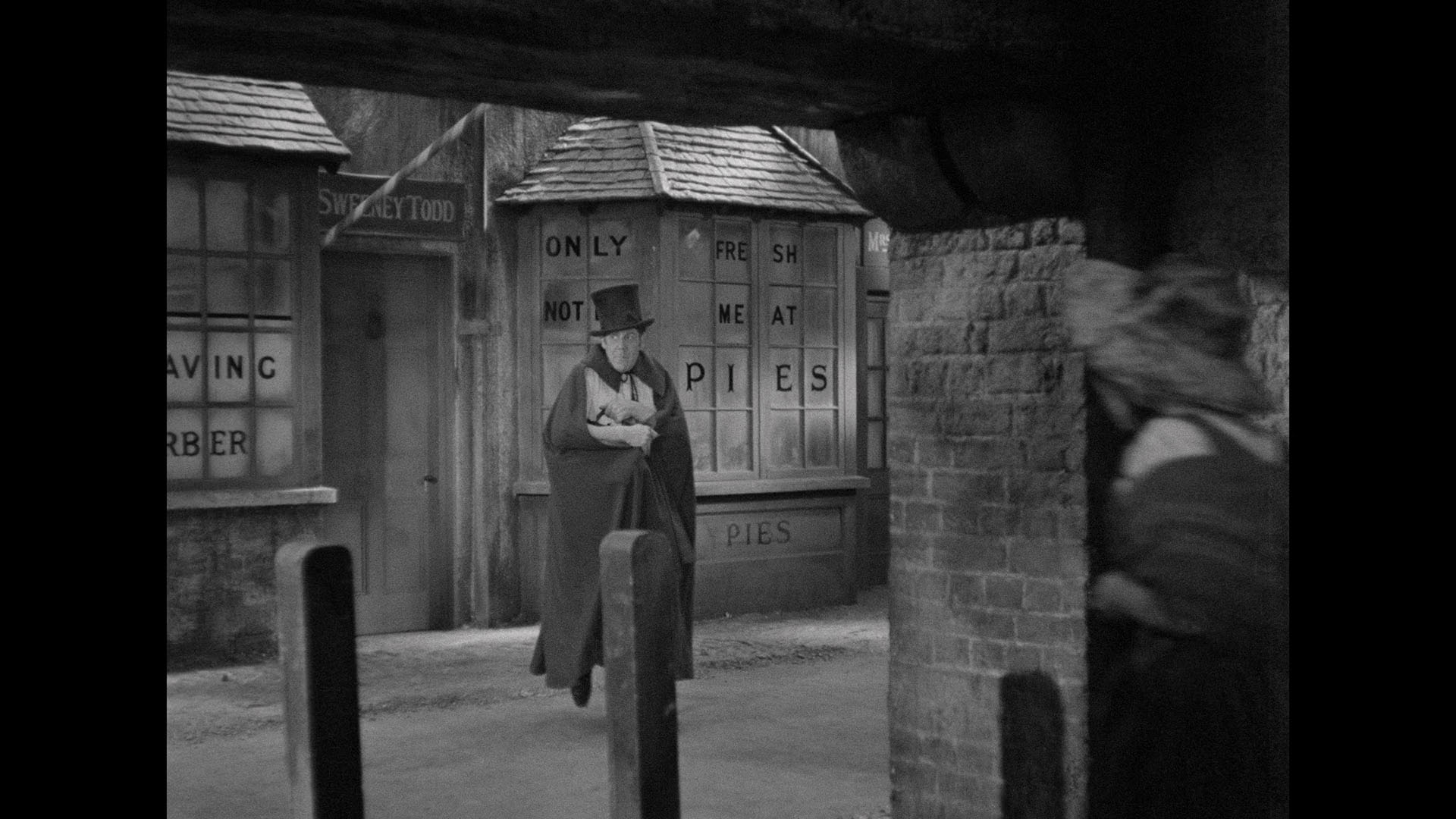 The
The 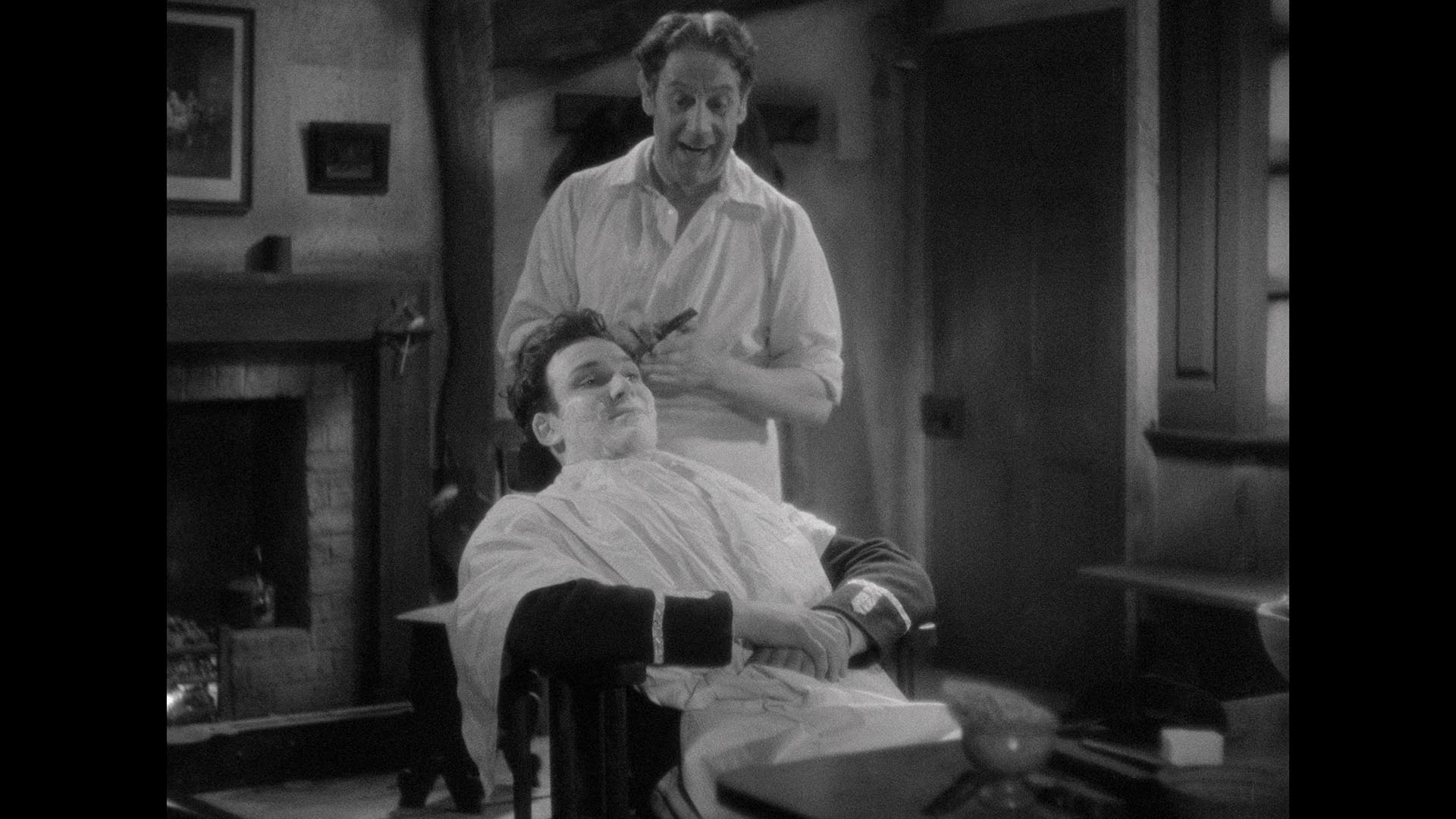 detail levels, inky blacks, and radically improved sound (LPCM 1.0 English mono with welcome English SDH subtitles) all make these great fun to watch, and even those who dismissed them in the past would be wise to give them another shot under these conditions. A new audio commentary by Josephine Botting and Vic Pratt for Maria Marten is enthusiastic and informative with plenty of information about the true crime source, the original play, and the theatrical traditions carried over for this rendition, as well as background about Rosmer and the star. A new commentary by Stephen Jones and Kim Newman for Sweeney Todd is also lively and up to the same standard, parsing through the history of the butchering barber, Victorian stage traditions that made him famous, and comparisons to other versions before and after. "The Long Shadow" (10m23s) is a new interview with artist- illustrator Ania Goszczyńska and Current 93 channeler-trance scribbler David Tibet about their longtime admiration for Slaughter's work, the appeal of that era of art and performance, and the appeal of these stories often culled from real crimes and folklore. Then you get four-act audio plays of Maria Martens and Sweeney Todd from the early '30s featuring Slaughter and an orchestra, jamming the whole thing into 13m7s and 12m28s respectively, or alternate versions with music by Current 93. Also included are separate image galleries for Maria Martens (17 images) and Sweeney Todd (46 images), followed by four really fascinating Slaughter-oriented short films. 1936's Tod Slaughter at Home (4m7s) is a fun, hammy staged interview with Sweeney Todd, recorded for the Pathétone newsreel, including a jokey punchline at the end. 1938's Pots of Plots (3m51s) is a flamboyant promo short for Slaughter, seen at his makeup table while three of his fictional alter egos appear around him. 1946's Bothered by a Beard (35m1s) is a funny Gaumont instructional short about the history of men's barbers and shaving, with some crazy beards on display and a Slaughter cameo as Sweeney Todd (in a much nuttier wig than before). Finally 1954's Puzzle Corner No. 14 (19m12s) goes in the history books as the star's last appearance on film, offering an English tour starting at Southampton and then cruising through some historical landmarks including a stop where Slaughter does his menacing
detail levels, inky blacks, and radically improved sound (LPCM 1.0 English mono with welcome English SDH subtitles) all make these great fun to watch, and even those who dismissed them in the past would be wise to give them another shot under these conditions. A new audio commentary by Josephine Botting and Vic Pratt for Maria Marten is enthusiastic and informative with plenty of information about the true crime source, the original play, and the theatrical traditions carried over for this rendition, as well as background about Rosmer and the star. A new commentary by Stephen Jones and Kim Newman for Sweeney Todd is also lively and up to the same standard, parsing through the history of the butchering barber, Victorian stage traditions that made him famous, and comparisons to other versions before and after. "The Long Shadow" (10m23s) is a new interview with artist- illustrator Ania Goszczyńska and Current 93 channeler-trance scribbler David Tibet about their longtime admiration for Slaughter's work, the appeal of that era of art and performance, and the appeal of these stories often culled from real crimes and folklore. Then you get four-act audio plays of Maria Martens and Sweeney Todd from the early '30s featuring Slaughter and an orchestra, jamming the whole thing into 13m7s and 12m28s respectively, or alternate versions with music by Current 93. Also included are separate image galleries for Maria Martens (17 images) and Sweeney Todd (46 images), followed by four really fascinating Slaughter-oriented short films. 1936's Tod Slaughter at Home (4m7s) is a fun, hammy staged interview with Sweeney Todd, recorded for the Pathétone newsreel, including a jokey punchline at the end. 1938's Pots of Plots (3m51s) is a flamboyant promo short for Slaughter, seen at his makeup table while three of his fictional alter egos appear around him. 1946's Bothered by a Beard (35m1s) is a funny Gaumont instructional short about the history of men's barbers and shaving, with some crazy beards on display and a Slaughter cameo as Sweeney Todd (in a much nuttier wig than before). Finally 1954's Puzzle Corner No. 14 (19m12s) goes in the history books as the star's last appearance on film, offering an English tour starting at Southampton and then cruising through some historical landmarks including a stop where Slaughter does his menacing 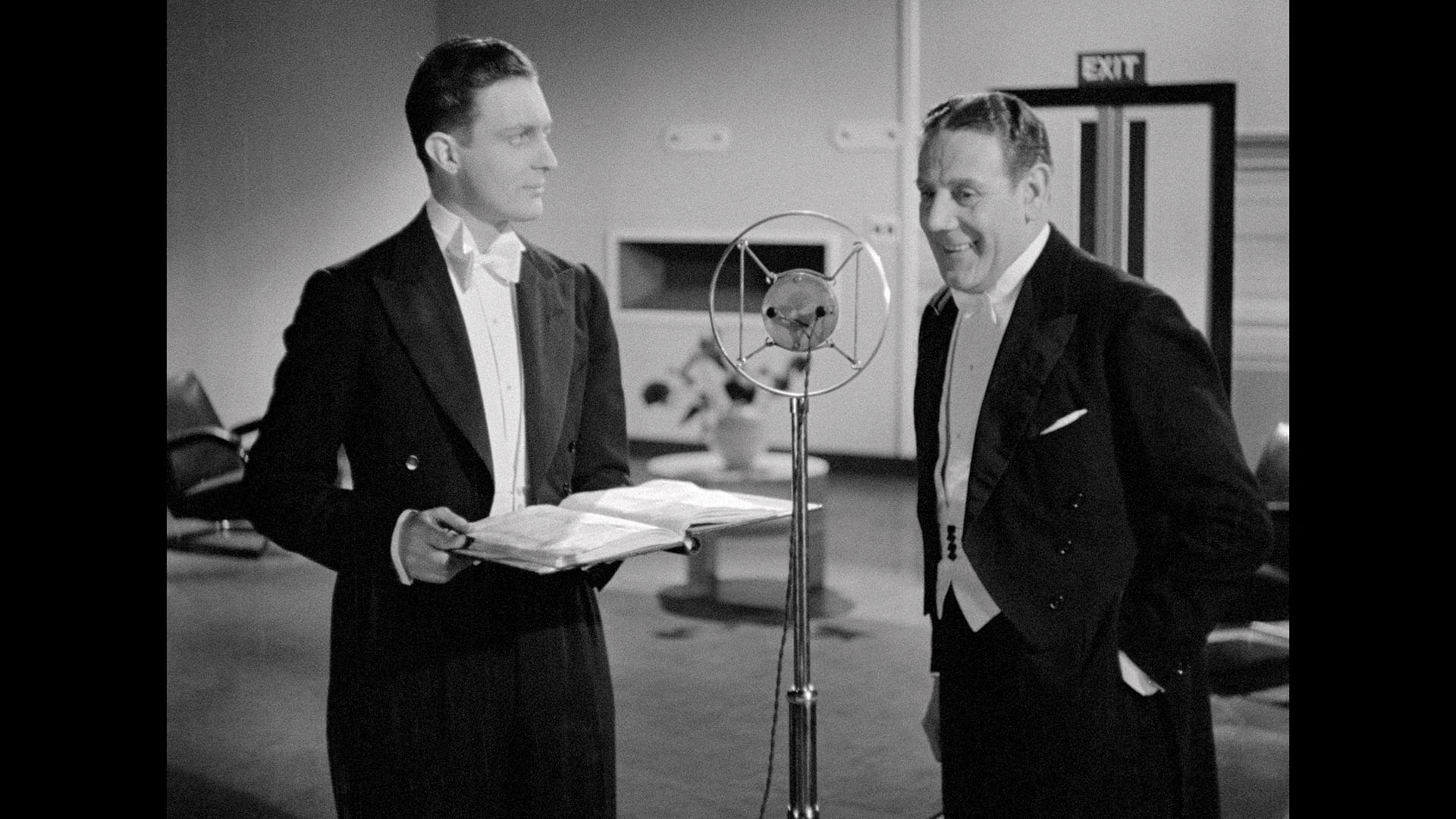 barber
barber 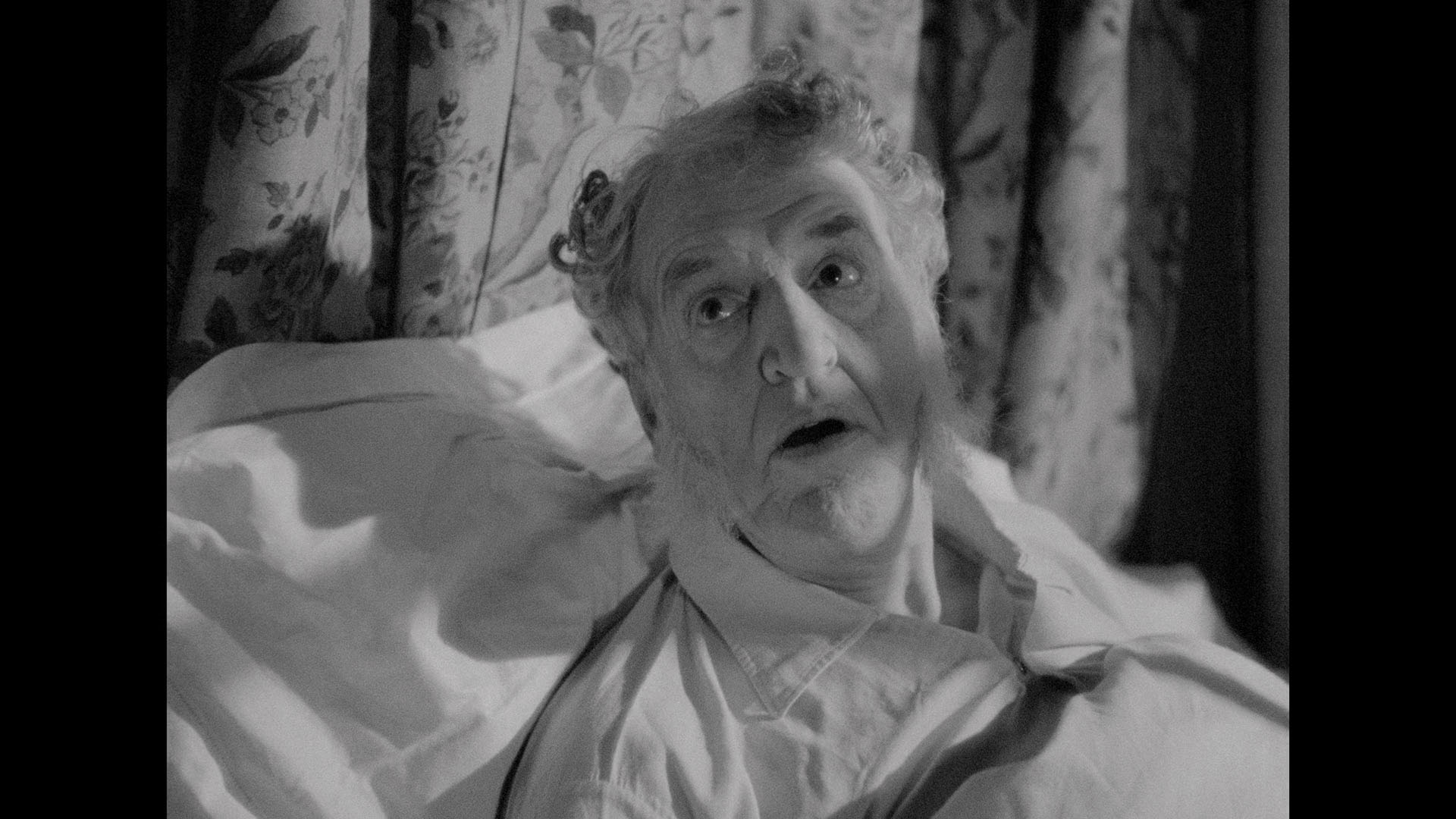 routine.
routine.
Things get shaken up a bit on disc two with the next pair of features starting with 1936's The Crimes of Stephen Hawke, an original story tailored to Slaughter's approach and the classic melodrama tradition. That tactic is set up with a delightfully strange modern-day intro at a BBC radio studio where Slaughter himself shows up after a musical act (named Flotsam and Jetsam) to present this sinister saga, in which he also appears as the title character. A brutal killer know as the Spine-Breaker is on the loose in 19th-century London, and despite the fact that his hands have "sinews of steel," nobody seems to realize the back-breaking culprit is money lender Stephen Hawke. Matthew Trimble (Portman again, looking even more frilly) uses a bit of corpse-posing subterfuge to get a private confession from Hawke for killing Matthew's dad, but he decides not to alert the police since Matthew is in love with Hawke's daughter, Julia (Taylor), who doesn't know she's adopted. Apparently thinking a serial killer is acceptable for an in-law, Matthew soon comes to regret his life choices as Hawke's body count continues mount with one snapped spine after another.
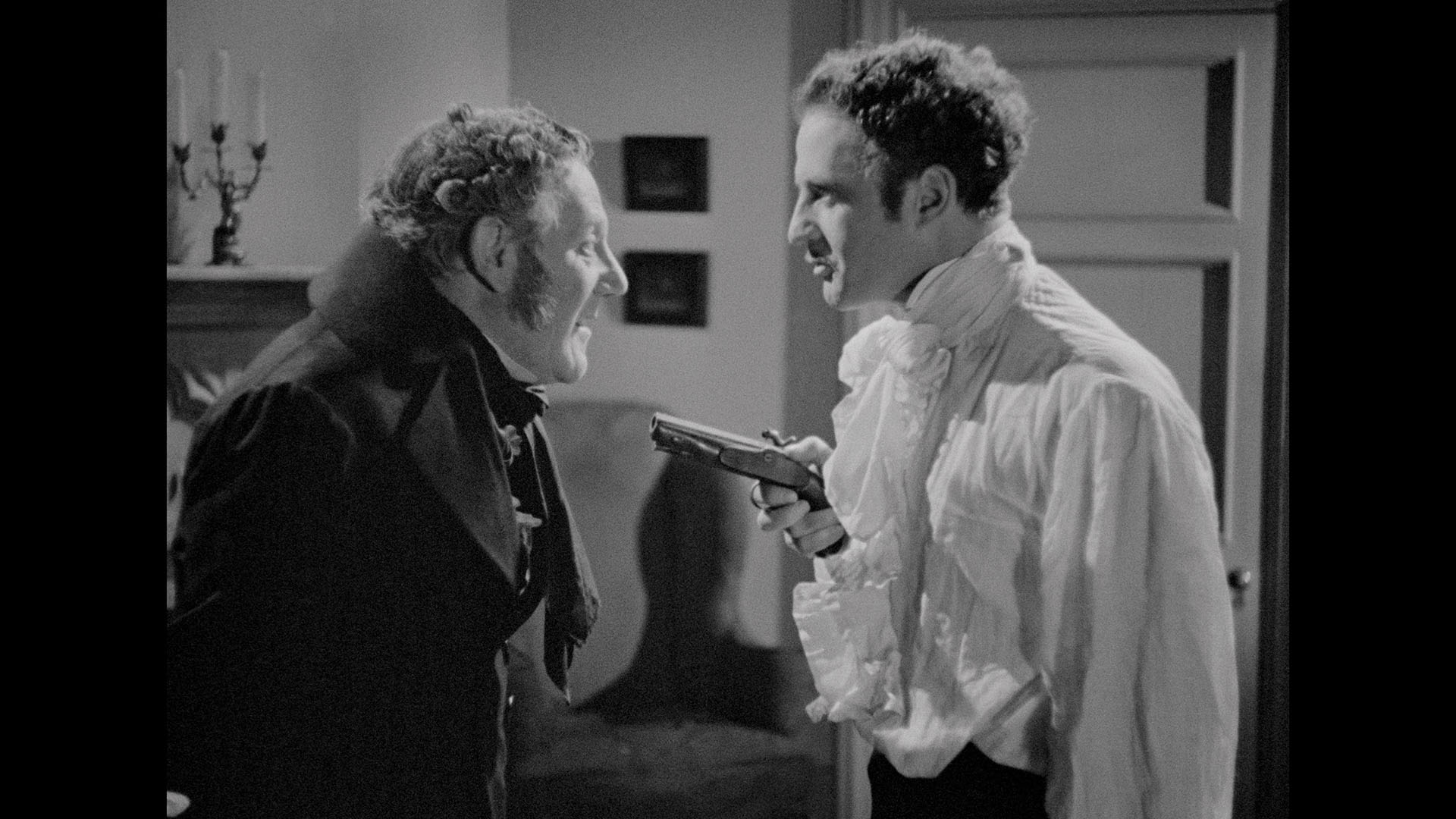 If you want to see a really prototypical Tod Slaughter movie, this would be the one. It seems designed to give the star as
If you want to see a really prototypical Tod Slaughter movie, this would be the one. It seems designed to give the star as 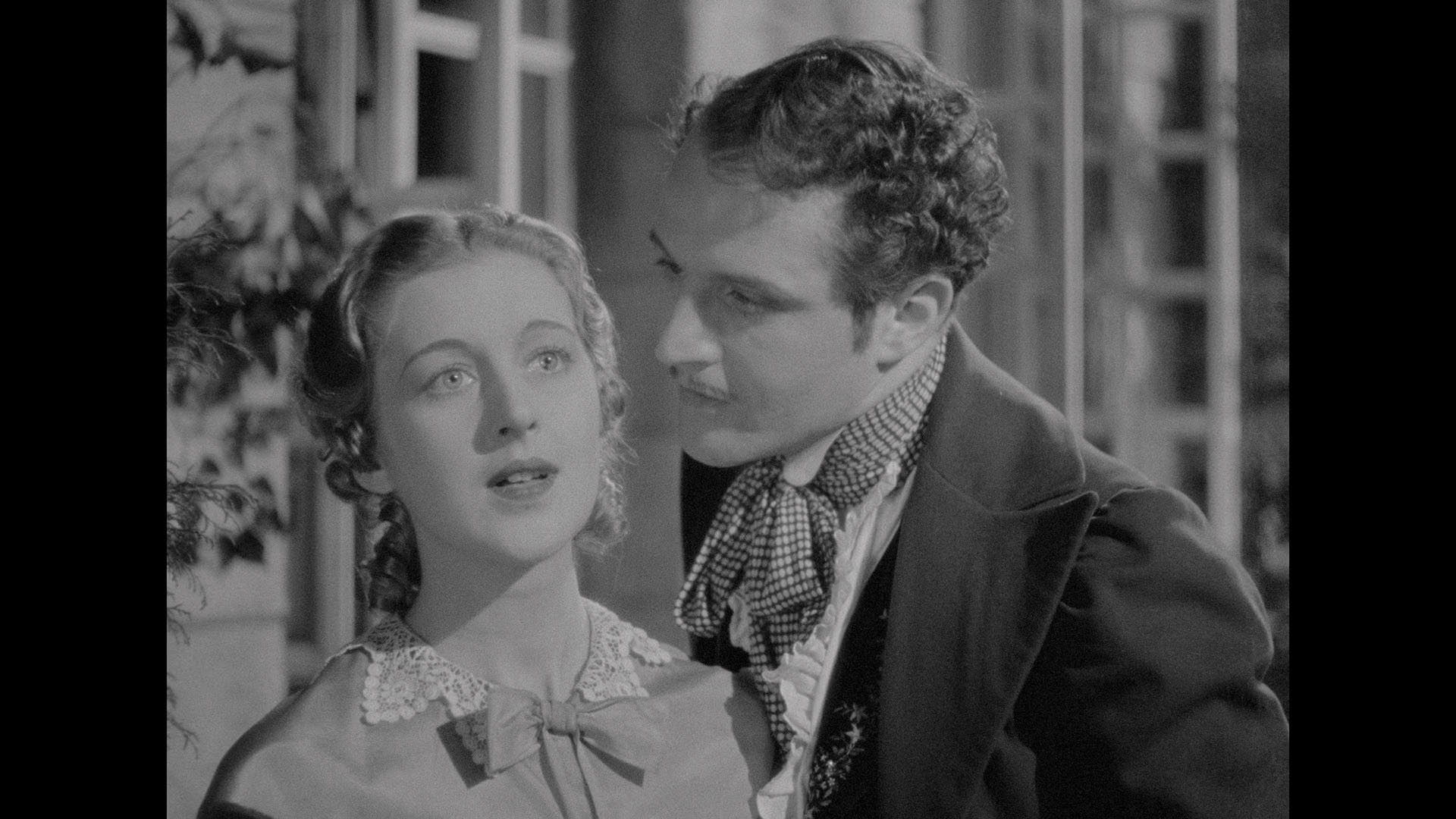 many opportunities as possible to bump off people in the first act (including some who would normally be off limits in stories like this) before he gets to really flex his acting muscles and even earn a weird sort of audience sympathy by the end. Foggy evenings, jail scuffles, screaming victims, and a great climax make this one another winner, and King makes this outing a tad more cinematic with some more artful use of shadows and sound effects (including some grisly off-screen murder sequences). This one also may hold a place in the history books for the first movie use of "The Colonel Bogey March," which gets placed prominently here and would later up in Hitchcock's 1938 The Lady Vanishes before finding its most famous incarnation in The Bridge on the River Kwai.
many opportunities as possible to bump off people in the first act (including some who would normally be off limits in stories like this) before he gets to really flex his acting muscles and even earn a weird sort of audience sympathy by the end. Foggy evenings, jail scuffles, screaming victims, and a great climax make this one another winner, and King makes this outing a tad more cinematic with some more artful use of shadows and sound effects (including some grisly off-screen murder sequences). This one also may hold a place in the history books for the first movie use of "The Colonel Bogey March," which gets placed prominently here and would later up in Hitchcock's 1938 The Lady Vanishes before finding its most famous incarnation in The Bridge on the River Kwai.
The co-feature here is one that treads the furthest from the horror genre in the traditional sense, 1937's It's Never Too Late to Mend (sometimes shortened to just Never Too Late to Mend), a grim melodramatic look at the prior century's brutal penal system. Picked up after its completion by a religious distribution outfit and using all the tactics of a religious scare film, it still lets its star operate full force here as Bible-toting Squire John Meadows, who oversees the local prison with an iron fist and makes life miserable for the inmates -- some of whom are his enemies locked up on trumped-up charges. Of course, 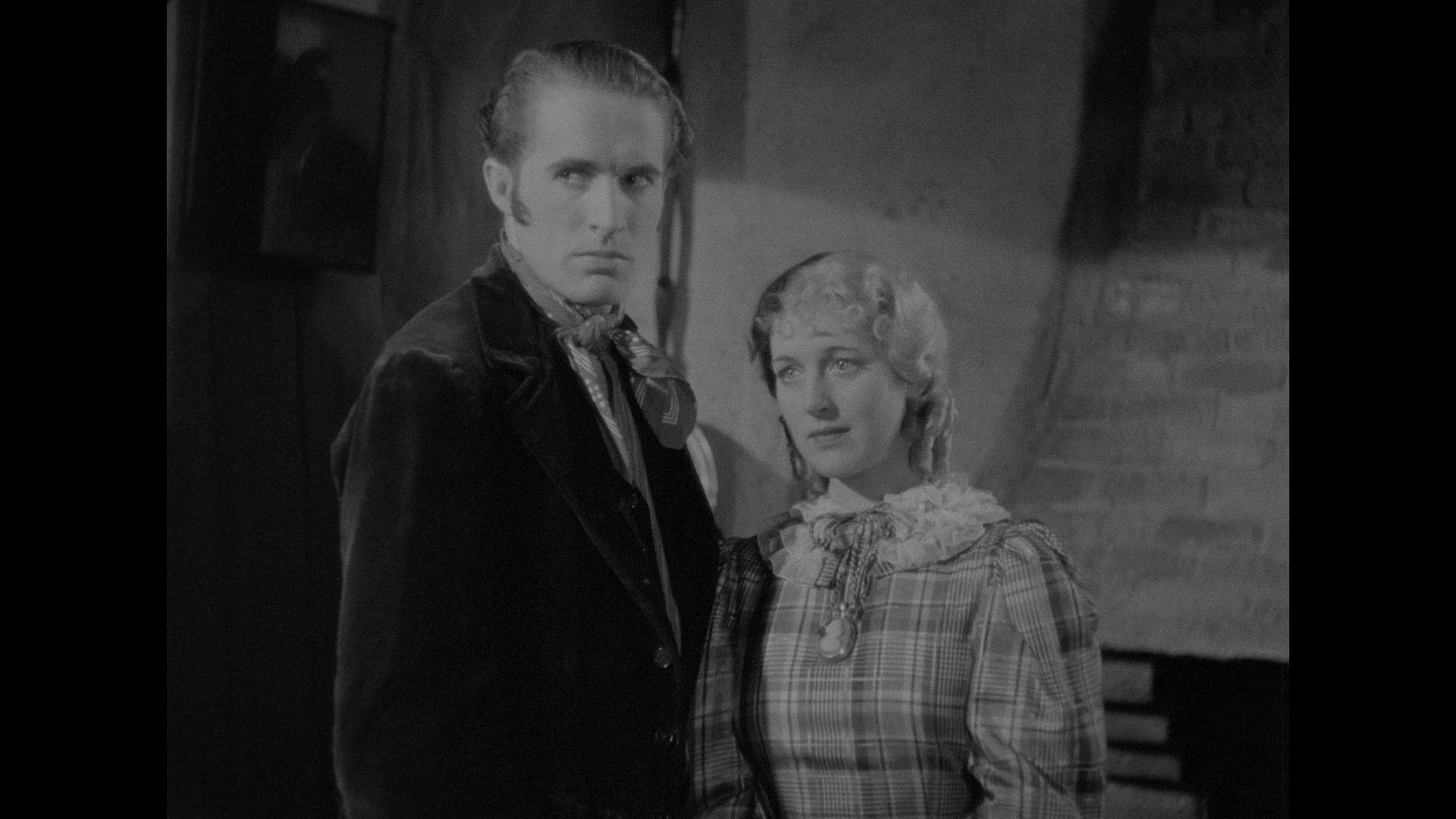 Meadows has his eye on another young woman here, Susan (Taylor again), who instead loves a poor young farmer, George (Colin) -- who
Meadows has his eye on another young woman here, Susan (Taylor again), who instead loves a poor young farmer, George (Colin) -- who 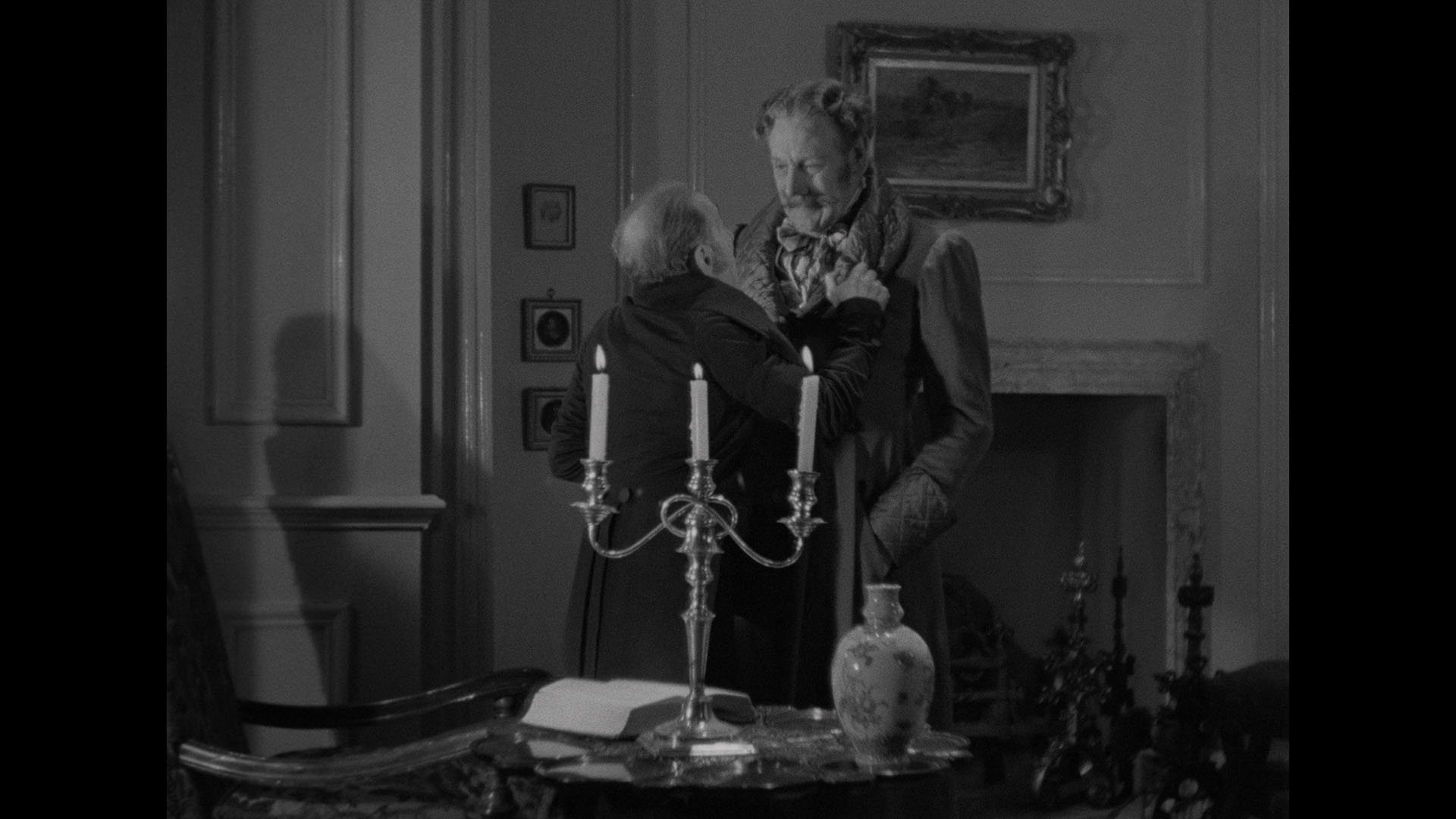 might be next in line for Meadows' vengeful methods, unless his best friend Tom (Livesey) gets roped in instead.
might be next in line for Meadows' vengeful methods, unless his best friend Tom (Livesey) gets roped in instead.
Though this one isn't as outrageous or morbid as the preceding films, it is a fascinating one as a bit of a change of pace as well as the most obvious through-line to where British horror would eventually be heading in the '70s with the films of Pete Walker. (There's a strong proto-House of Whipcord vibe here at times.) By this point Slaughter had pretty much perfected his screen persona as an abusive but magnetic baddie, something that wasn't a critical darling at the time but must have caught the eye of Alfred Hitchcock who quite possibly used him as inspiration for Charles Laughton's similarly ripe, pistol-packing turn as a murderous squire in the 1939 whodunit-free version of Jamaica Inn.
Again both of these films have been rescued from public domain muck with sterling 2K restorations from 4K scans of the nitrate negatives, and the results are once again immaculate and light years better than anything we've had before. Speaking of '70s British horror, screenwriter and delightful raconteur David McGillivray (Frightmare, The Confessional) joins 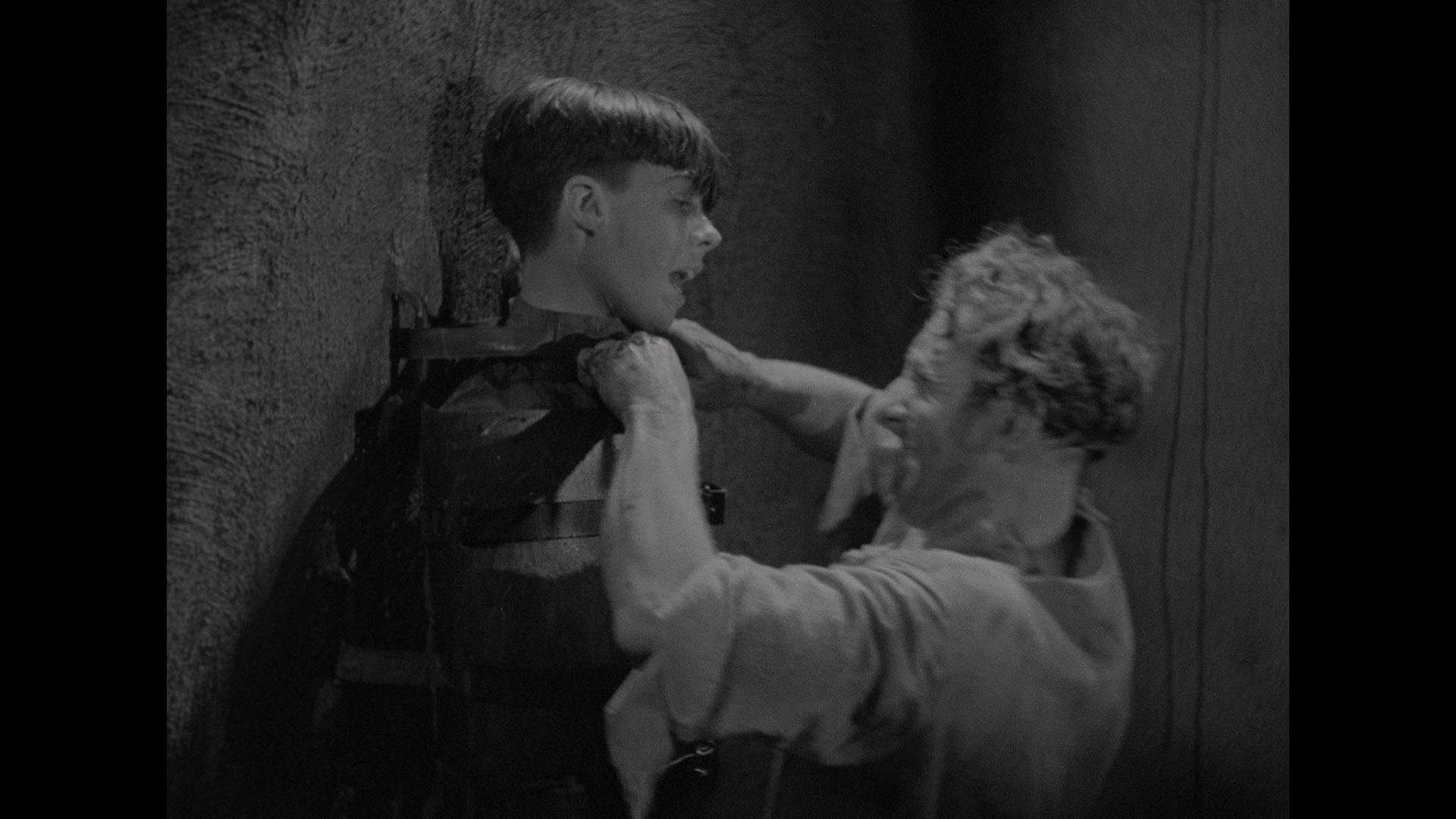 Newman for a great new track for The Crimes of Stephen Hawke, explaining that oddball opening in detail and
Newman for a great new track for The Crimes of Stephen Hawke, explaining that oddball opening in detail and 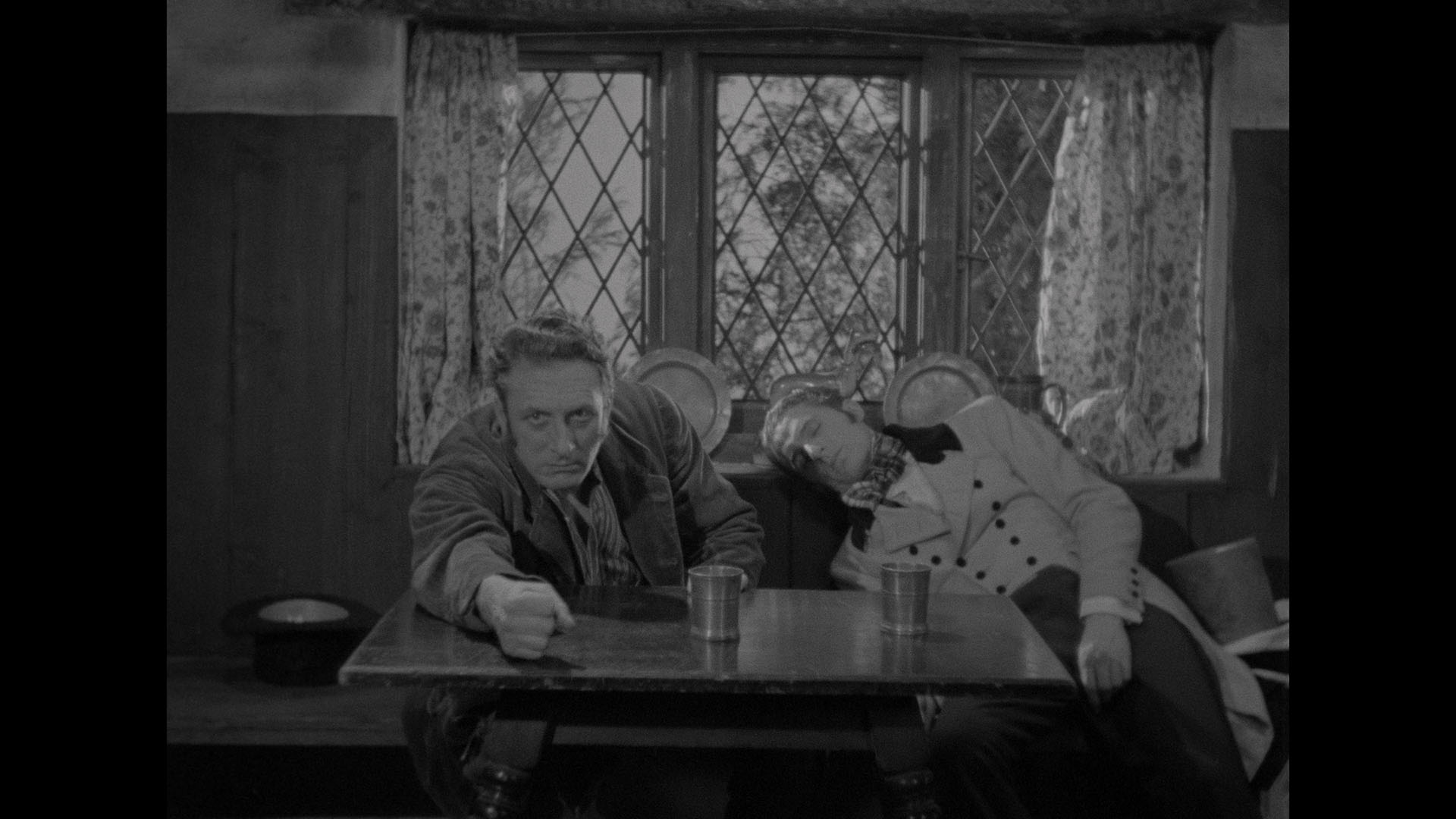 pulling apart all the details of this brisk third entry in the cycle (by which point it had also amassed a sort of repertory theater company and running set of motifs). Kevin Lyons and Jonathan Rigby tackle It's Never Too Late to Mend wonderfully as well, providing plenty of info about as many character actors as they can (even though most of them are uncredited), noting the connections to its source novel, explaining the unusual release situation, and noting connections to other Slaughter screen and stage roles. Also included are image galleries for both films (12 images each) and a delightfully lurid script treatment for Stephen Hawke, plus the 1926 short film London After Dark (7m12s), silent or with a Current 93 score, featuring the earliest existing footage of Slaughter on stage at the Elephant and Castle Theatre.
pulling apart all the details of this brisk third entry in the cycle (by which point it had also amassed a sort of repertory theater company and running set of motifs). Kevin Lyons and Jonathan Rigby tackle It's Never Too Late to Mend wonderfully as well, providing plenty of info about as many character actors as they can (even though most of them are uncredited), noting the connections to its source novel, explaining the unusual release situation, and noting connections to other Slaughter screen and stage roles. Also included are image galleries for both films (12 images each) and a delightfully lurid script treatment for Stephen Hawke, plus the 1926 short film London After Dark (7m12s), silent or with a Current 93 score, featuring the earliest existing footage of Slaughter on stage at the Elephant and Castle Theatre.
The social issue of imprisonment rears its head again on disc three in 1937's The Ticket of Leave Man, whose title refers to a person out on parole from jail. Slaughter is up to no 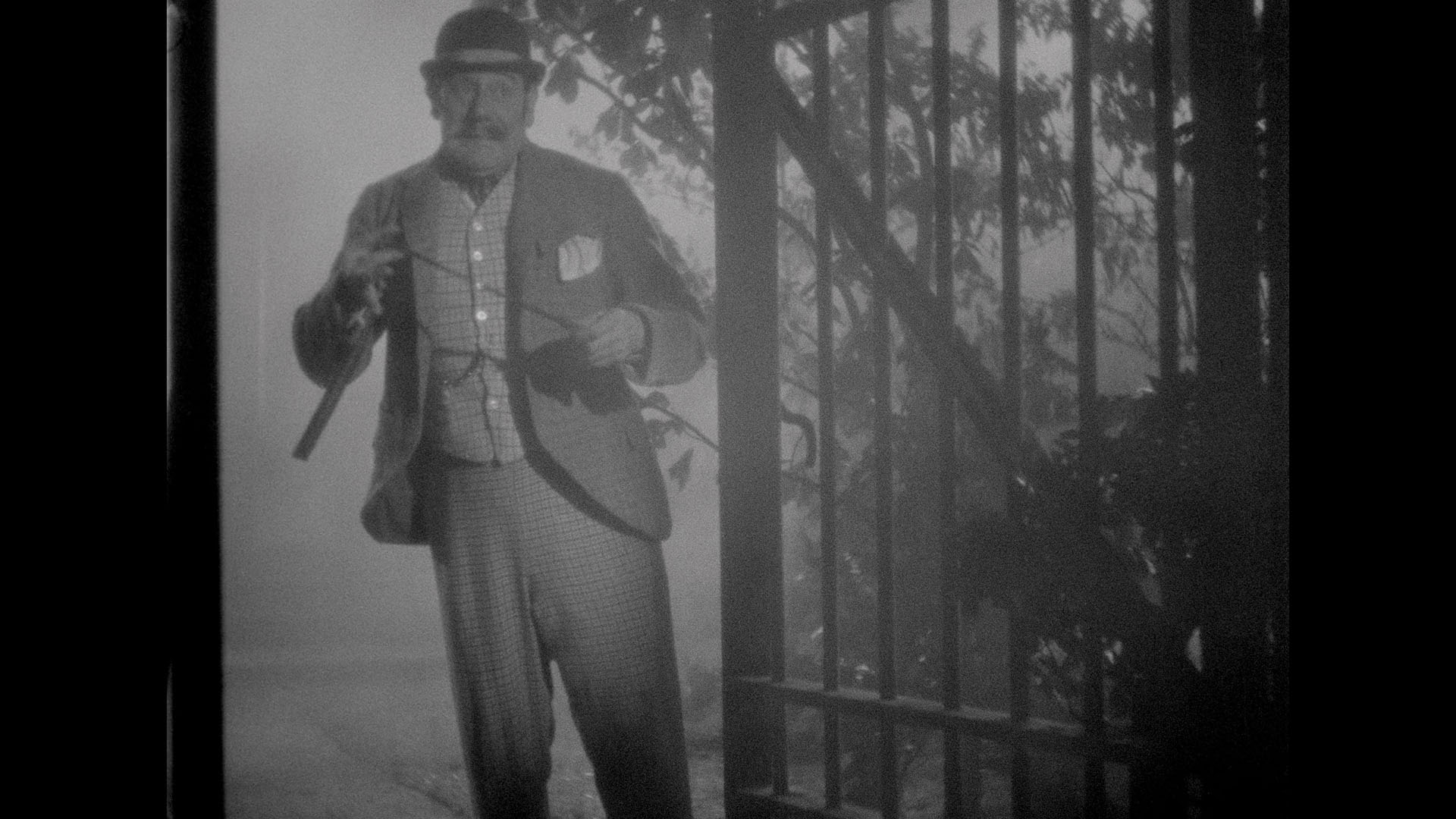 good as soon as the opening credits wrap, scampering out of a house he's been robbing on a foggy evening and garroting a guard for his trouble.
good as soon as the opening credits wrap, scampering out of a house he's been robbing on a foggy evening and garroting a guard for his trouble. 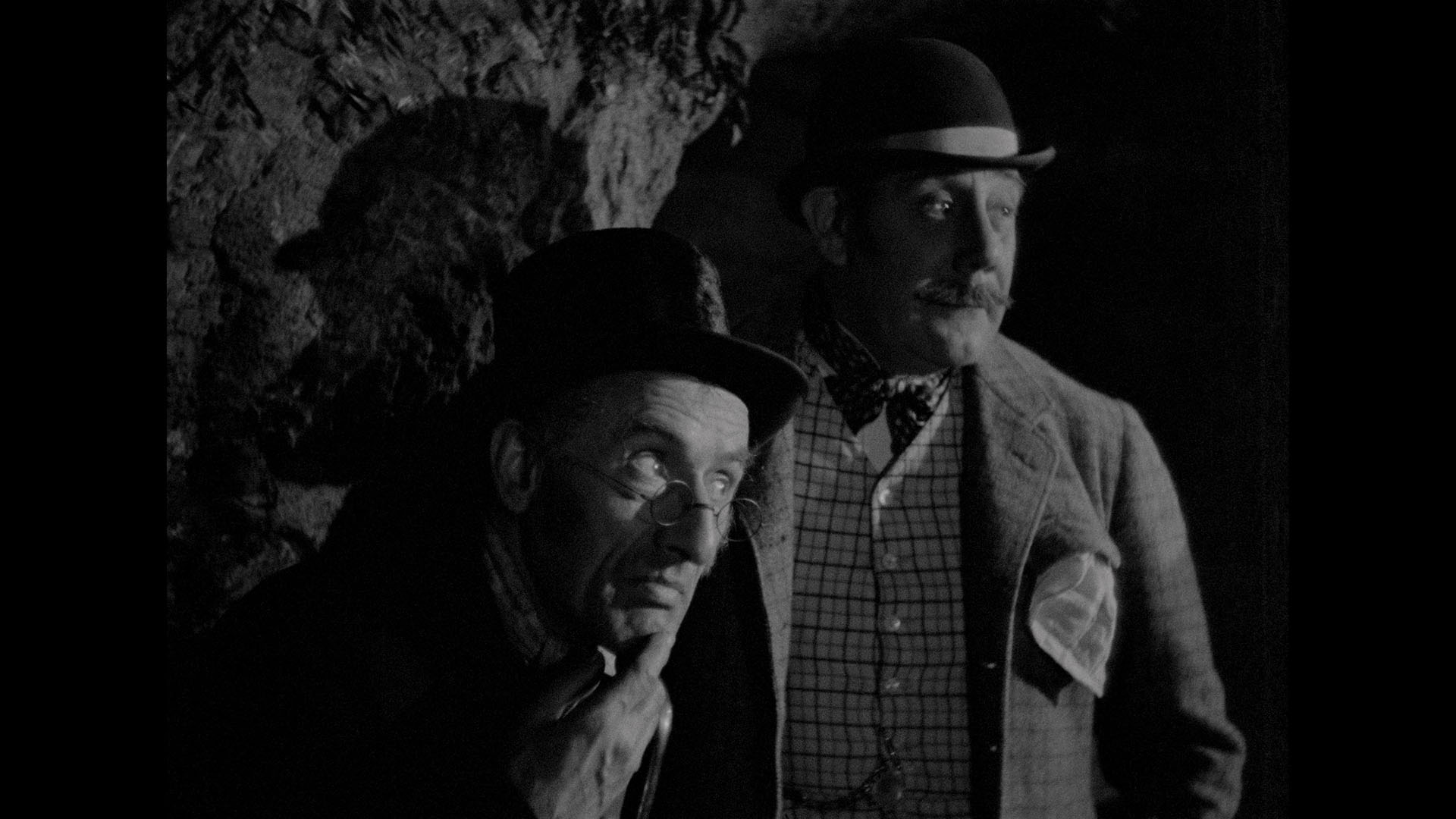 Expanded and vamped up a bit from an 1863 play, it stars Slaughter as The Tiger, who moves in civilized society we all meet during a nighttime tea garden soiree featuring entertainment by singer May Edwards (Taylor, of course). Her boyfriend is ex-con Bob Brierly (Warwick), who's about to start an entry level job at a bank. Of course The Tiger, eager to get his counterfeiting scheme off the ground, arranges to frame Robert for his misdeeds, but even a prison sentence can't fully shake the detective in charge, Hawkshaw (Adair), from thinking something is still amiss.
Expanded and vamped up a bit from an 1863 play, it stars Slaughter as The Tiger, who moves in civilized society we all meet during a nighttime tea garden soiree featuring entertainment by singer May Edwards (Taylor, of course). Her boyfriend is ex-con Bob Brierly (Warwick), who's about to start an entry level job at a bank. Of course The Tiger, eager to get his counterfeiting scheme off the ground, arranges to frame Robert for his misdeeds, but even a prison sentence can't fully shake the detective in charge, Hawkshaw (Adair), from thinking something is still amiss.
The idea of Slaughter as a garrote-twirling villain is one that seems like the next logical step here, and he's great fun again here sporting a clean-shaven look and powdered gray hair to emphasize his higher standing in society. As usual you get a barrage of familiar faces here in significant and bit roles, while the quickie budget is stretched to allow for some surprisingly elaborate and impressive period settings including some really impressive sets at times.
The second film on disc three is the only one set in the present day, and it's a bit of a switch again with the pulp adventure Sexton Blake and the Hooded Terror (sometimes just shown as The Hooded Terror). Frequently compared to Sherlock Holmes due to his residence on Baker Street, colorful housekeeper, and penchant for scientific experiments, Sexton Blake was a British agent hero often pitted against outlandish, 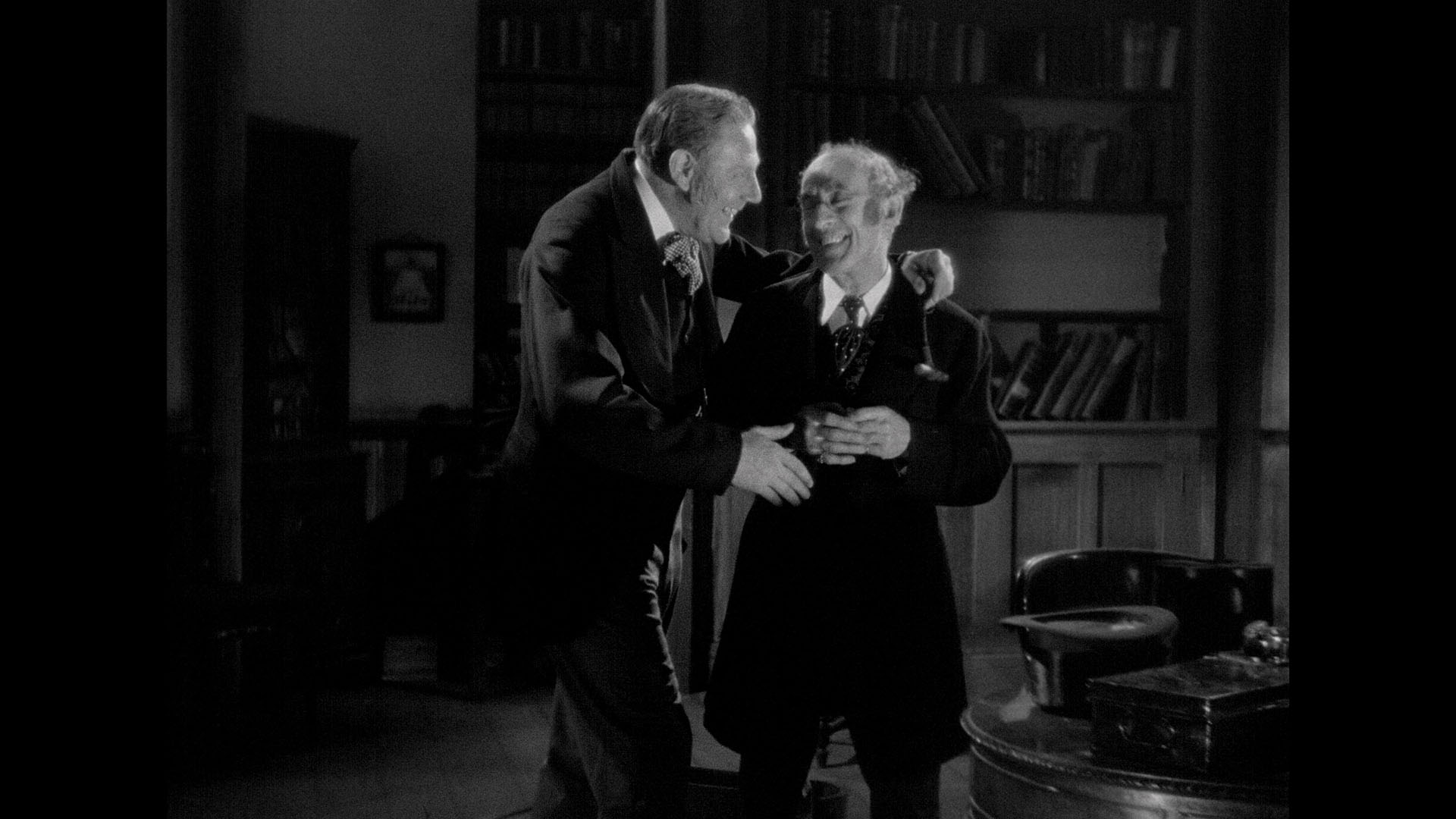 grotesque villains with gimmicky names and elaborate criminal plots a la Sax Rohmer and Ian Fleming. Here Slaughter splits top billing with George Curzon, in his third, last, and most widely
grotesque villains with gimmicky names and elaborate criminal plots a la Sax Rohmer and Ian Fleming. Here Slaughter splits top billing with George Curzon, in his third, last, and most widely 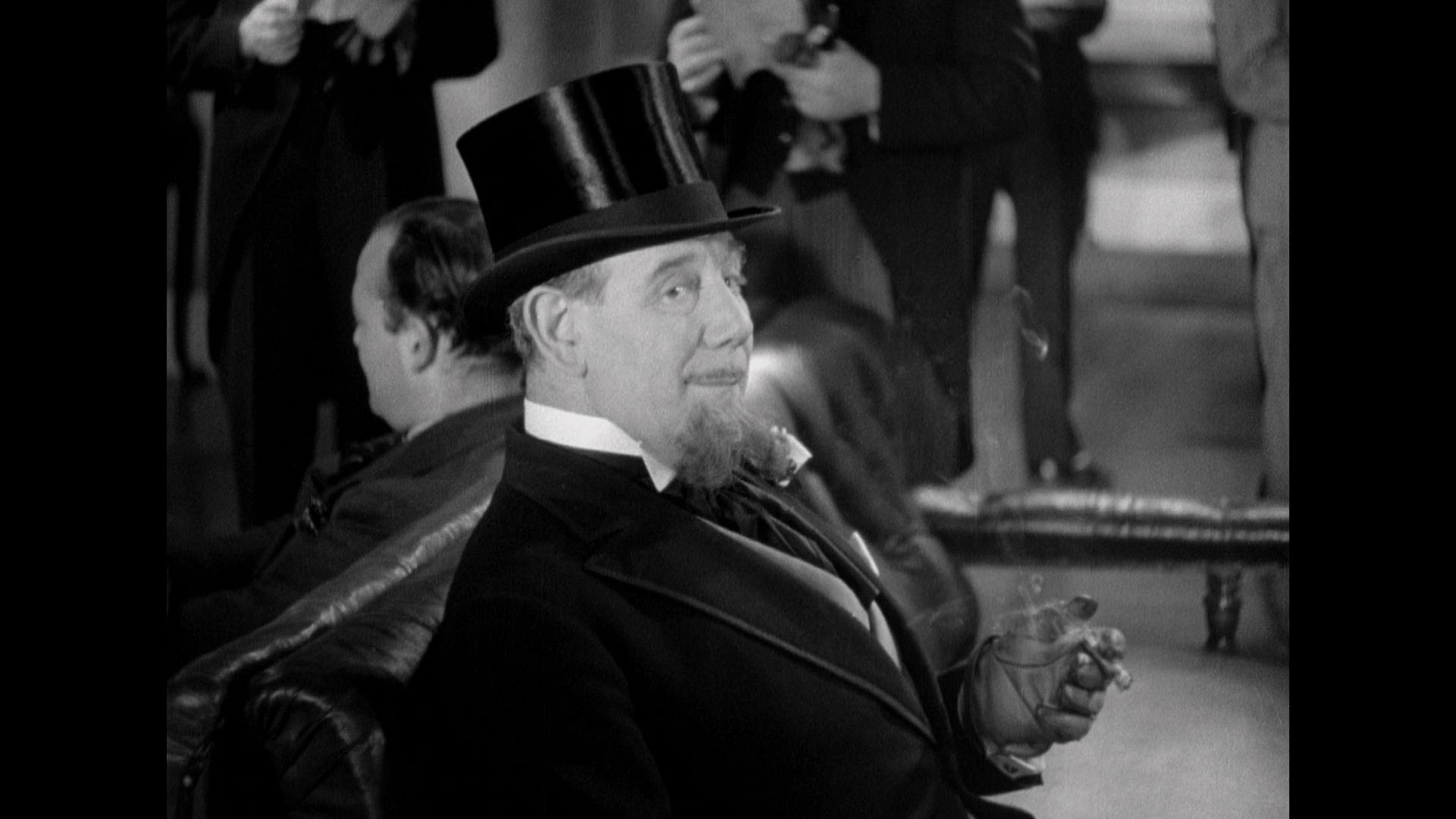 seen excursion as Sexton Blake; Curzon also appeared in several '30s Hitchcock films, most memorably as that very important "drummer man" in Young and Innocent. Slaughter dials it down just a tad here as wicked stamp collector and arch villain Michael Larron, whose organization earns its title of "The Hooded Terror" since he organizes his lackeys in smoke-filled meetings where he wears a hood and robe with a big shiny snake insignia. Sexton is tipped off when the Hooded Terror strikes down another British agent, Granite Grant, played in one of his first significant role by future Black Narcissus star and screen heartthrob David Farrar (who oddly enough went on to star in 1945's Meet Sexton Blake and The Echo Murders as Blake himself). Can our resourceful sleuth get to the bottom of the underground plot before London is plunged into a nightmare? What do you think?
seen excursion as Sexton Blake; Curzon also appeared in several '30s Hitchcock films, most memorably as that very important "drummer man" in Young and Innocent. Slaughter dials it down just a tad here as wicked stamp collector and arch villain Michael Larron, whose organization earns its title of "The Hooded Terror" since he organizes his lackeys in smoke-filled meetings where he wears a hood and robe with a big shiny snake insignia. Sexton is tipped off when the Hooded Terror strikes down another British agent, Granite Grant, played in one of his first significant role by future Black Narcissus star and screen heartthrob David Farrar (who oddly enough went on to star in 1945's Meet Sexton Blake and The Echo Murders as Blake himself). Can our resourceful sleuth get to the bottom of the underground plot before London is plunged into a nightmare? What do you think?
With its detective story plotting and cliffhanger structure, this one doesn't really even come close to the horror genre it's usually placed in except for a bit of slightly macabre material in the third act. However, Slaughter's presence is enough to keep it in good company with the rest of his films, and he easily outshines the rather bland Curzon (who's also upstaged by Farrar in his far too brief screen time). It's a fleet and entertaining yarn all the way though, and anyone who's converted to Slaughter fandom by this point should enjoy seeing him tackle a bad guy role a few notches different than what came before.
The Ticket of Leave Man is another top-notch restoration job from the 35mm nitrate negative, while Hooded Terror is just a little bit less impressive since it comes from a 4K scan of a 35mm 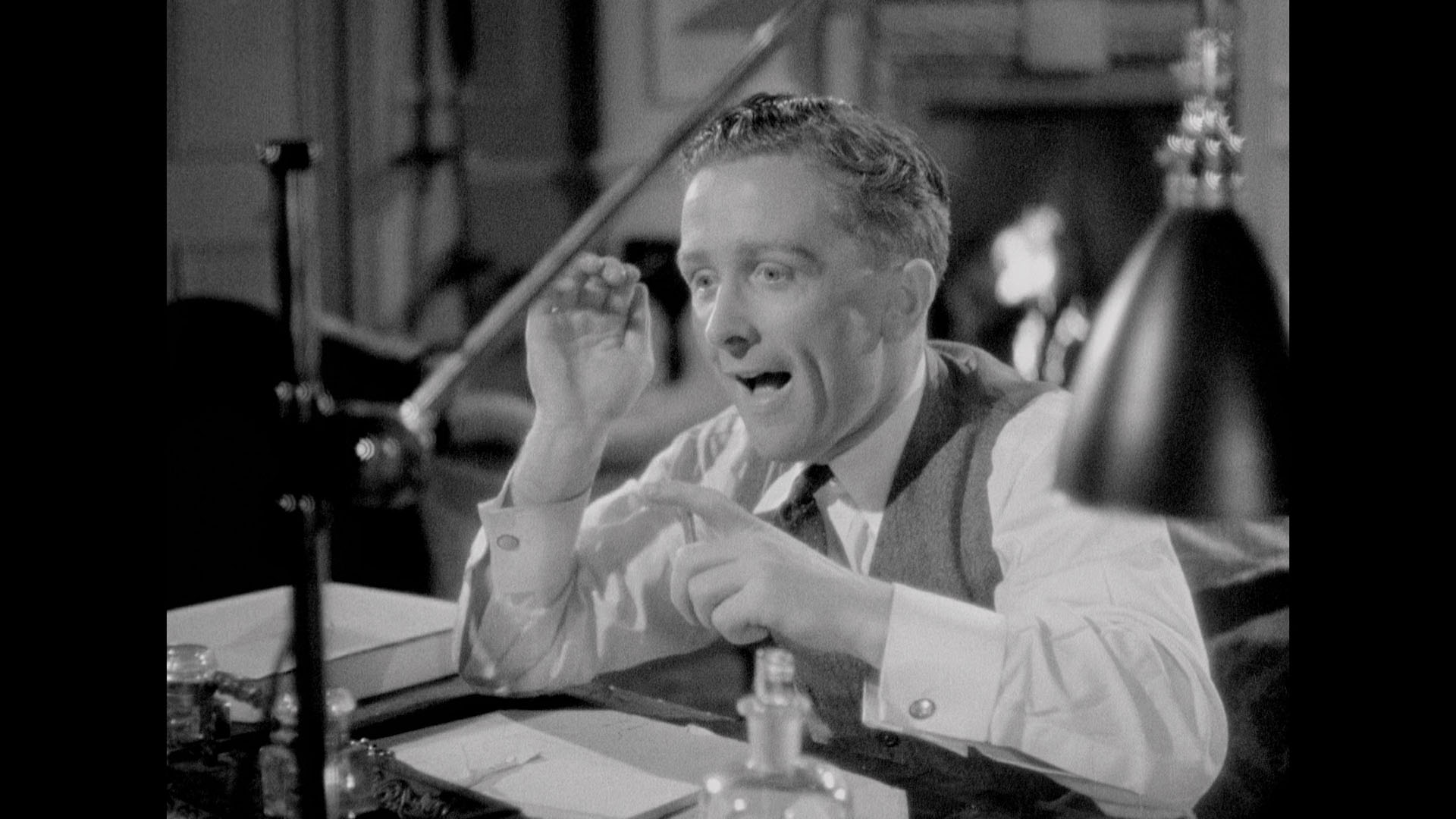 dupe positive. It's still vastly superior than any version we've had before, with only the heavier amount of grain and some rough
dupe positive. It's still vastly superior than any version we've had before, with only the heavier amount of grain and some rough 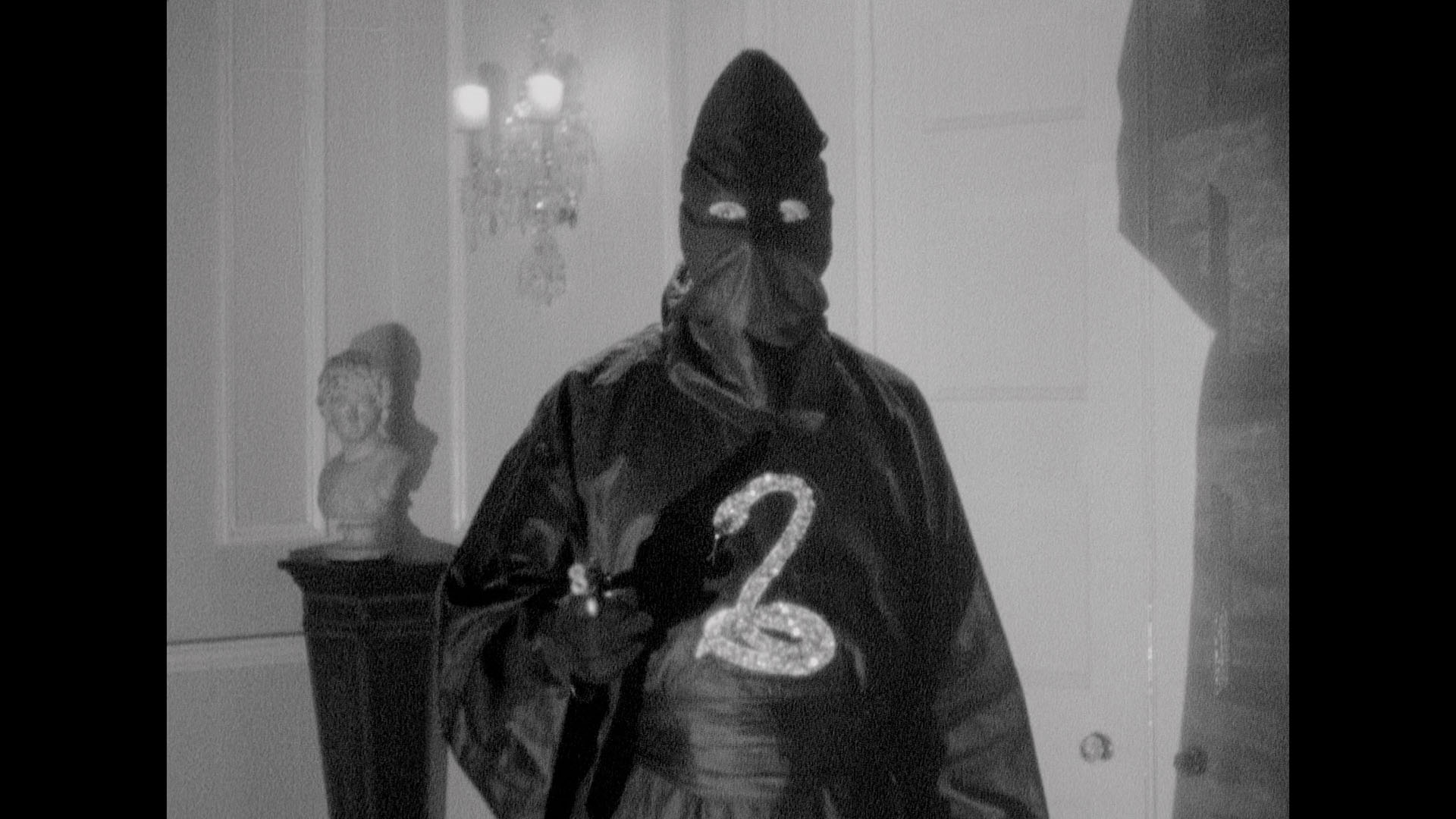 dissolves knocked it down here compared to the titles before it. Josephine Botting and Dave Thomas do the commentary honors on The Ticket of Leave Man, doing a skillful job of laying out the many embellishments created here compared to the stage play and covering all the essentials about the cast and crew. Then Newman and Stephen Jones provide the commentary for Hooded Terror with extensive coverage of the history behind Sexton Blake, his connections to other literary crime fighters, the backgrounds of the cast members, and the elements that make this stand out versus the other Slaughter films. In "Shock Factor" (11m19s), great-niece Imogen Slaughter and her father Giles (Tod's nephew) deliver new interviews about their legendary relative's life and career including his perception within the family, who weren't exactly approving of a theater career at the time. You also get a look at one of Slaughter's few recovered key possessions, which is a real treat to see. "Slaughter's Stock" (12m12s): video essay by Michael Brooke on the cavalcade of repertory players in these films, who were mandated by King since most of the players in Slaughter's theatrical productions had aged out by the time these films got off the ground. You'll find out about plenty of multiple and one-off key players here including scene stealer D.J. Williams and tons of others. Also included are image galleries (13 and 9 shots
dissolves knocked it down here compared to the titles before it. Josephine Botting and Dave Thomas do the commentary honors on The Ticket of Leave Man, doing a skillful job of laying out the many embellishments created here compared to the stage play and covering all the essentials about the cast and crew. Then Newman and Stephen Jones provide the commentary for Hooded Terror with extensive coverage of the history behind Sexton Blake, his connections to other literary crime fighters, the backgrounds of the cast members, and the elements that make this stand out versus the other Slaughter films. In "Shock Factor" (11m19s), great-niece Imogen Slaughter and her father Giles (Tod's nephew) deliver new interviews about their legendary relative's life and career including his perception within the family, who weren't exactly approving of a theater career at the time. You also get a look at one of Slaughter's few recovered key possessions, which is a real treat to see. "Slaughter's Stock" (12m12s): video essay by Michael Brooke on the cavalcade of repertory players in these films, who were mandated by King since most of the players in Slaughter's theatrical productions had aged out by the time these films got off the ground. You'll find out about plenty of multiple and one-off key players here including scene stealer D.J. Williams and tons of others. Also included are image galleries (13 and 9 shots 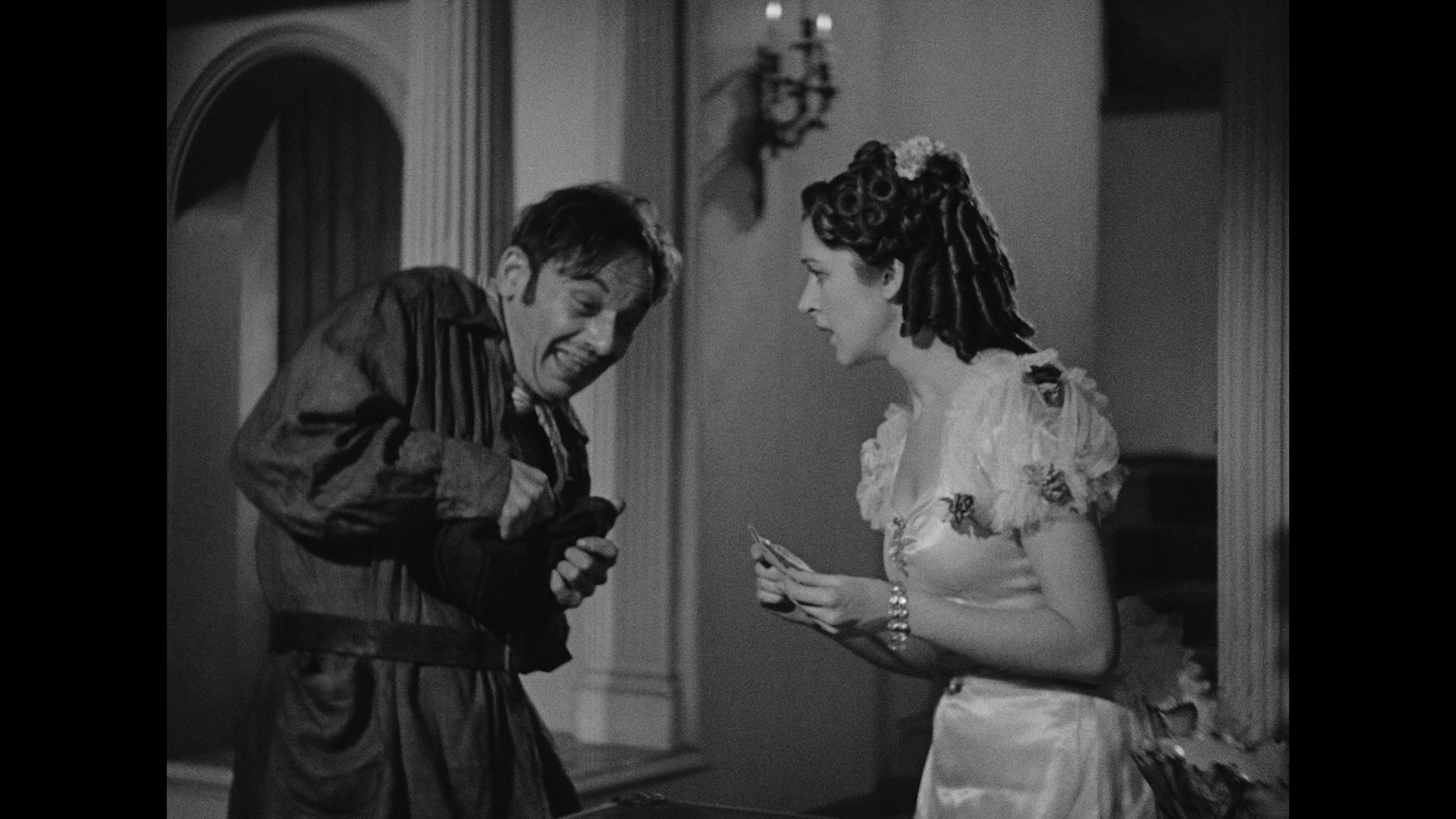 respectively).
respectively).
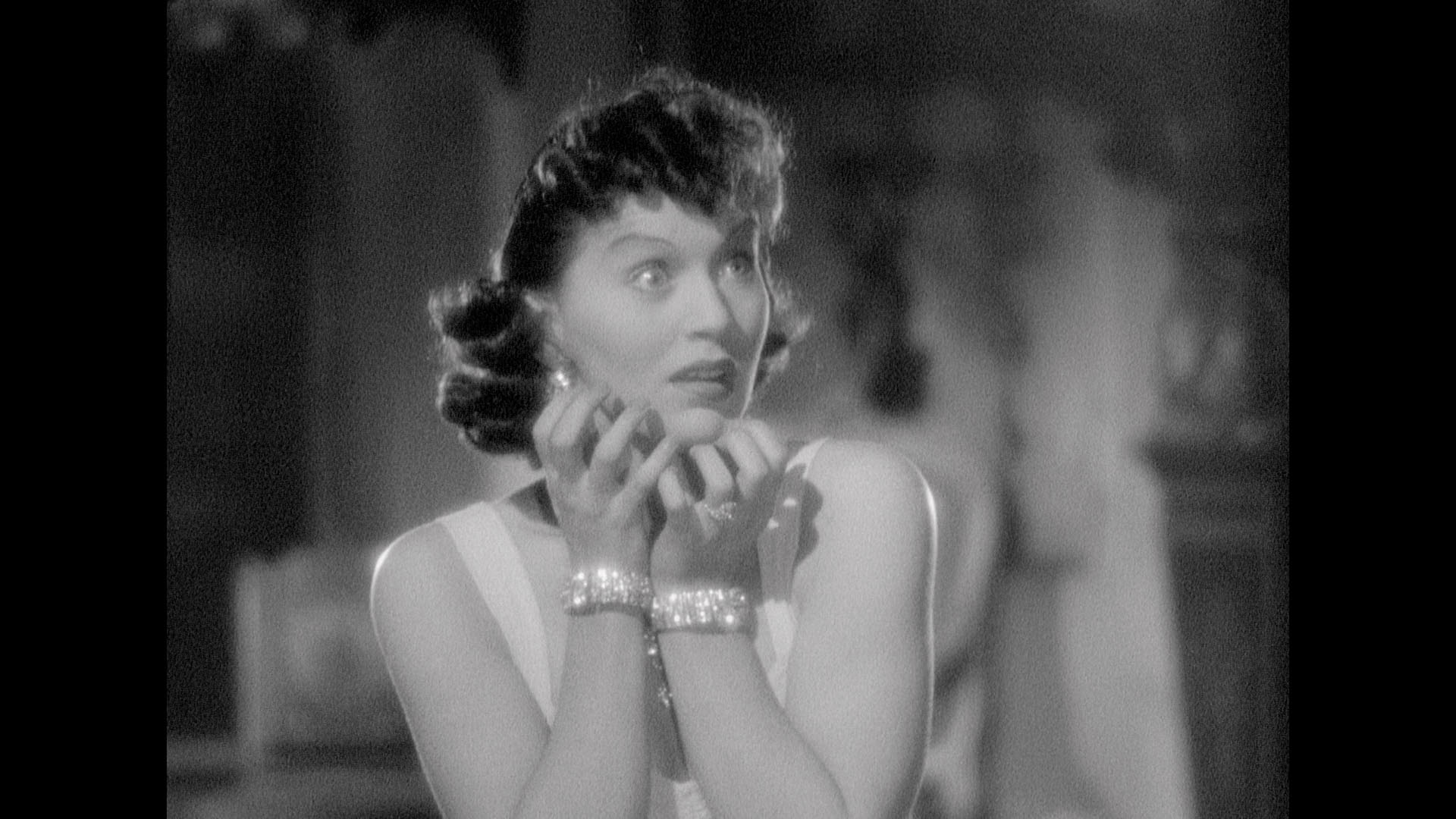 Finally on disc four we get to one of the best-loved Slaughter films and the most outright horrific of the bunch, the Universal-esque The Face at the Window. Here we travel to "France 1880 - A series of unsolved murders - A country panic-stricken - Fantastic stories of Le Loup - A wolf man. A wave of terror which inspired this melodrama of the old school - dear to the hearts of all who unashamedly enjoy either a shudder or a laugh at the heights of villainy." At least that's how the opening crawl puts it. A howl in the dead of night leaves a man mysteriously dead after he says only one clue, the title of the film itself. The deceased, Michel, worked for the Brisson Bank who have been robbed of a major gold reserve, so the owner enlists Chevalier Lucio del Gardo (Slaughter) to use his wealth and power to restore solvency and trust to the bank. However, the rich savior wants to marry Cecile de Brisson (Taylor) as part of the deal, and her heart belongs to the bank teller who aurally witnessed the crime, Lucien (Warwick). Of course, the Chevalier isn't pleased at the situation and comes up with a plan to have Cecile for himself-- while the murders continue with a monstrous face appearing at the scene of the crime...
Finally on disc four we get to one of the best-loved Slaughter films and the most outright horrific of the bunch, the Universal-esque The Face at the Window. Here we travel to "France 1880 - A series of unsolved murders - A country panic-stricken - Fantastic stories of Le Loup - A wolf man. A wave of terror which inspired this melodrama of the old school - dear to the hearts of all who unashamedly enjoy either a shudder or a laugh at the heights of villainy." At least that's how the opening crawl puts it. A howl in the dead of night leaves a man mysteriously dead after he says only one clue, the title of the film itself. The deceased, Michel, worked for the Brisson Bank who have been robbed of a major gold reserve, so the owner enlists Chevalier Lucio del Gardo (Slaughter) to use his wealth and power to restore solvency and trust to the bank. However, the rich savior wants to marry Cecile de Brisson (Taylor) as part of the deal, and her heart belongs to the bank teller who aurally witnessed the crime, Lucien (Warwick). Of course, the Chevalier isn't pleased at the situation and comes up with a plan to have Cecile for himself-- while the murders continue with a monstrous face appearing at the scene of the crime...
Going back to a 19th-century stage melodrama for its source, this is a terrific choice to sample Slaughter if you're new to his style. It's a rip-roaring genre film with plenty of spooky imagery and a great mustache-twirling turn by its star, who's back to being center stage here with a vengeance. This is the only film with a prior history on Blu-ray, with Kino Lorber issuing it in 2020 as a standalone title with a well-researched commentary by Jean-Claude Michel read by the label's 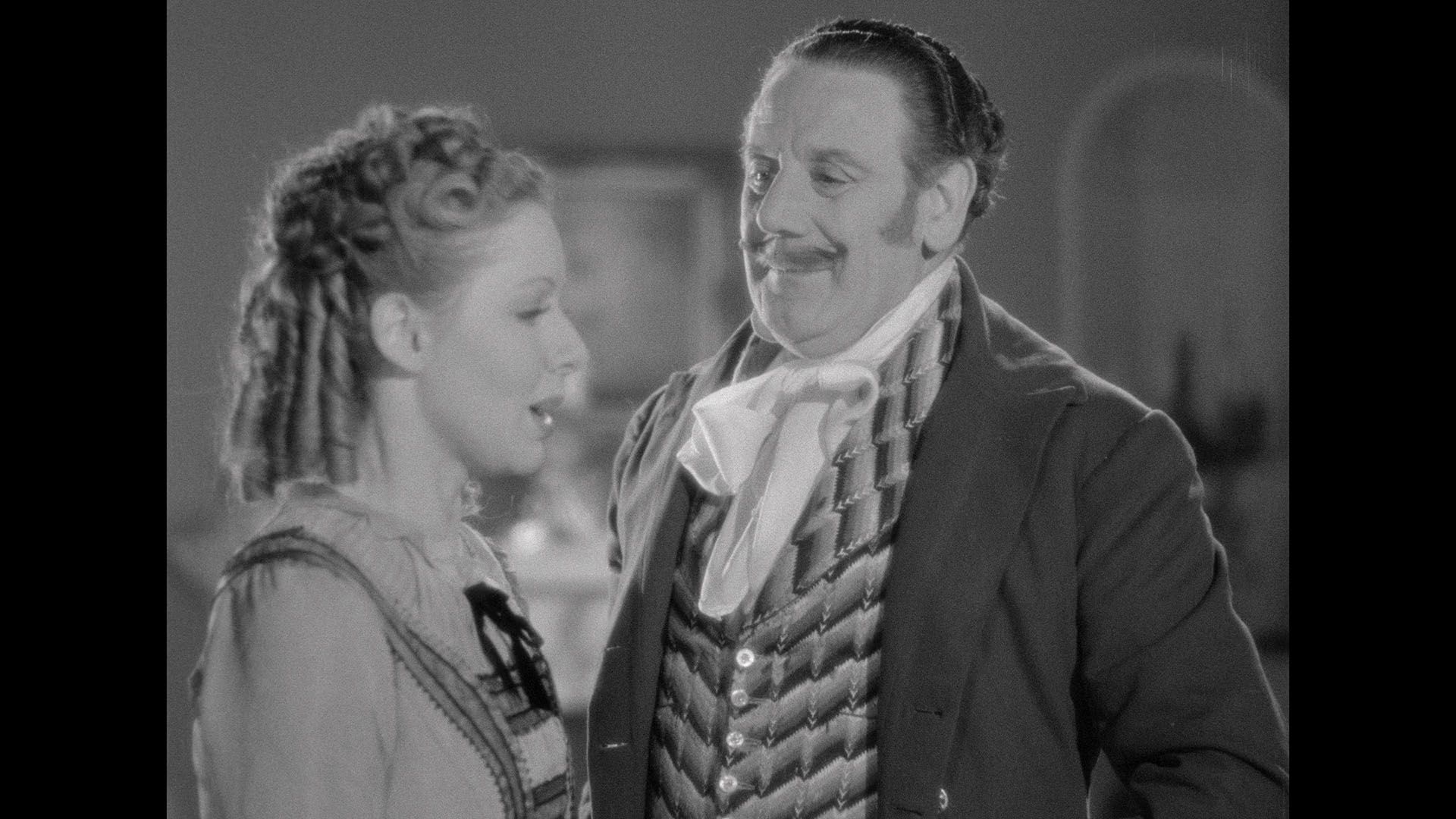 Bret Wood.
Bret Wood. 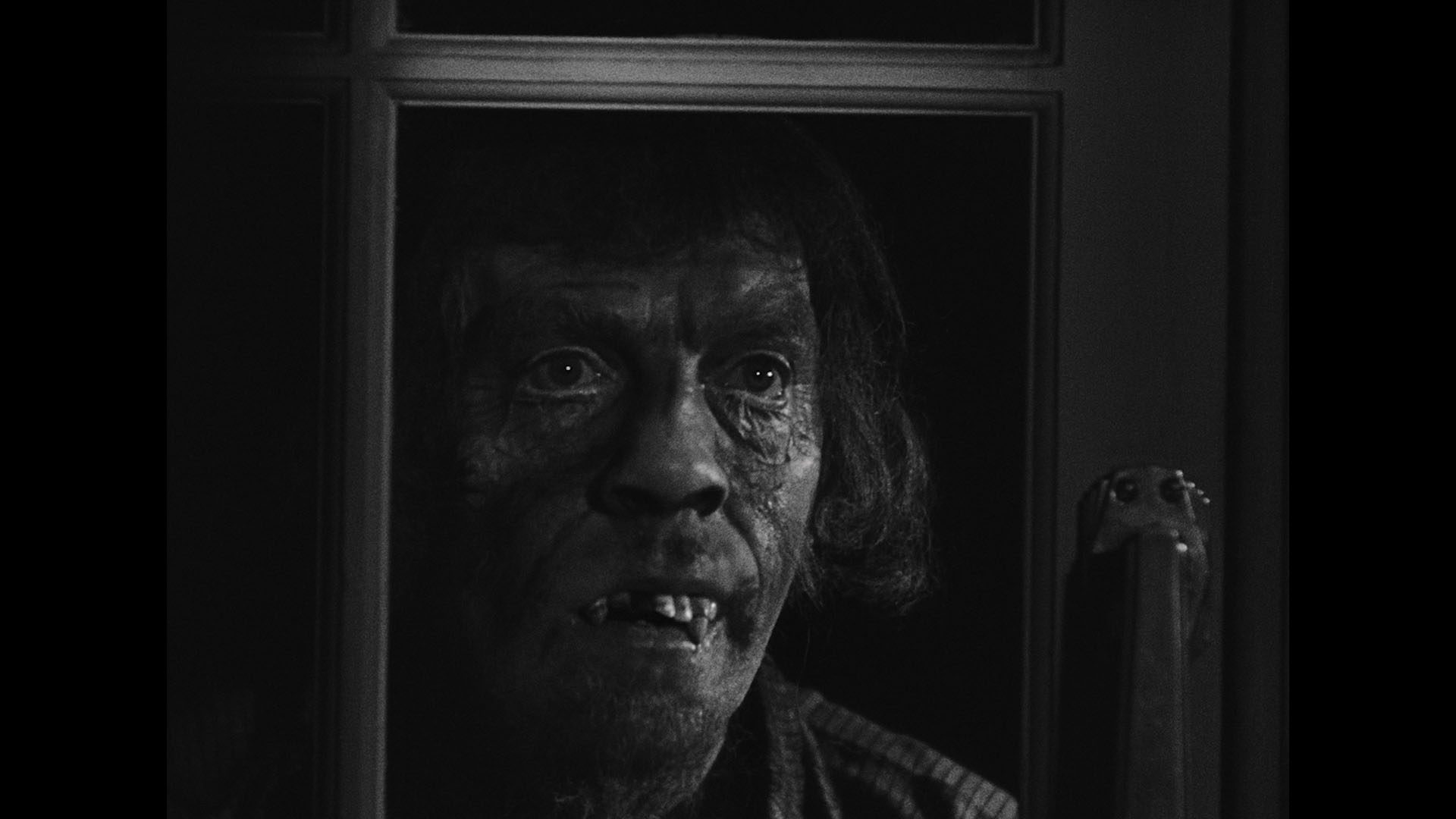 The same excellent source (cited here simply as a 4K scan, not quite as crisp as the best presentations in the set but no slouch at all) is ported over for the Indicator disc, this time with an equally solid track by Kevin Lyons and Jonathan Rigby who start off on an appropriately ripe note and have plenty to offer about the variations from the play source, the horror elements, and the little narrative reversals here that make this one unique.
The same excellent source (cited here simply as a 4K scan, not quite as crisp as the best presentations in the set but no slouch at all) is ported over for the Indicator disc, this time with an equally solid track by Kevin Lyons and Jonathan Rigby who start off on an appropriately ripe note and have plenty to offer about the variations from the play source, the horror elements, and the little narrative reversals here that make this one unique.
The same duo also deliver a commentary of excellent value for the last film in the set, 1940's Crimes at the Dark House, a seriously condensed and streamlined adaptation of Wilkie Collins' novel The Woman in White. We start off in 1850 Australia where Slaughter murders a gold field owner and assumes his identity of Sir Percival Glyde, a great way to travel to England to reap the rewards of his stolen reputation. As it turns out, his victim was actually penniless and now he has to come up with a new plan -- namely winning over and marrying a new bride so he can murder and exploit his new status as a manor lord. Completely chucking out the detective angle of the novel, this one focuses entirely on the villain's antics along with his cohort, Dr. Fosco (Petrie), with lots of 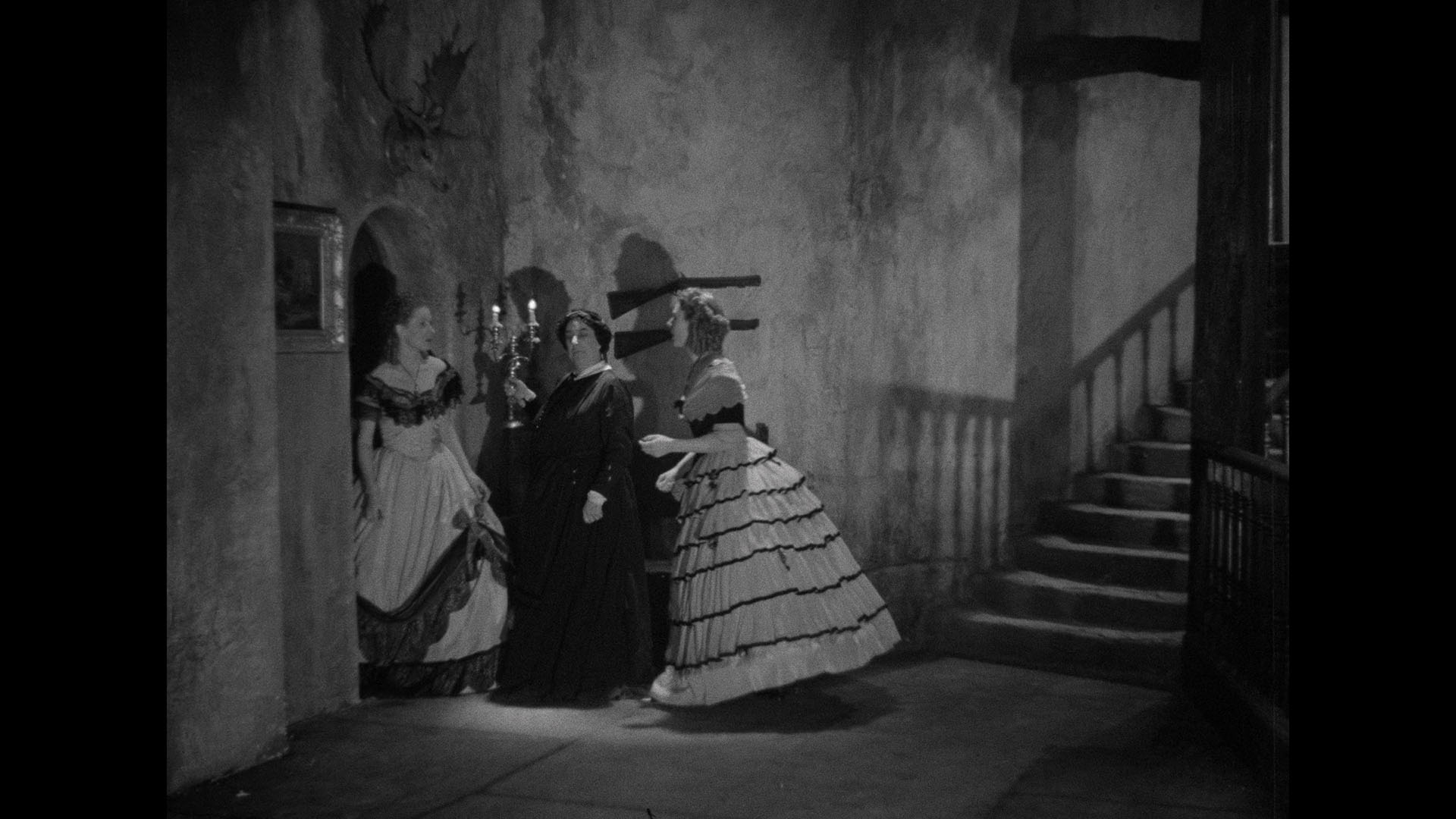 plummy dialogue and prime Slaughter-isms making this one far more satisfying as a vehicle for its leading man than a mystery adaptation.
plummy dialogue and prime Slaughter-isms making this one far more satisfying as a vehicle for its leading man than a mystery adaptation.
One of the worst casualties of past video transfers, Crimes at the Dark House looks gorgeous here with another one of the 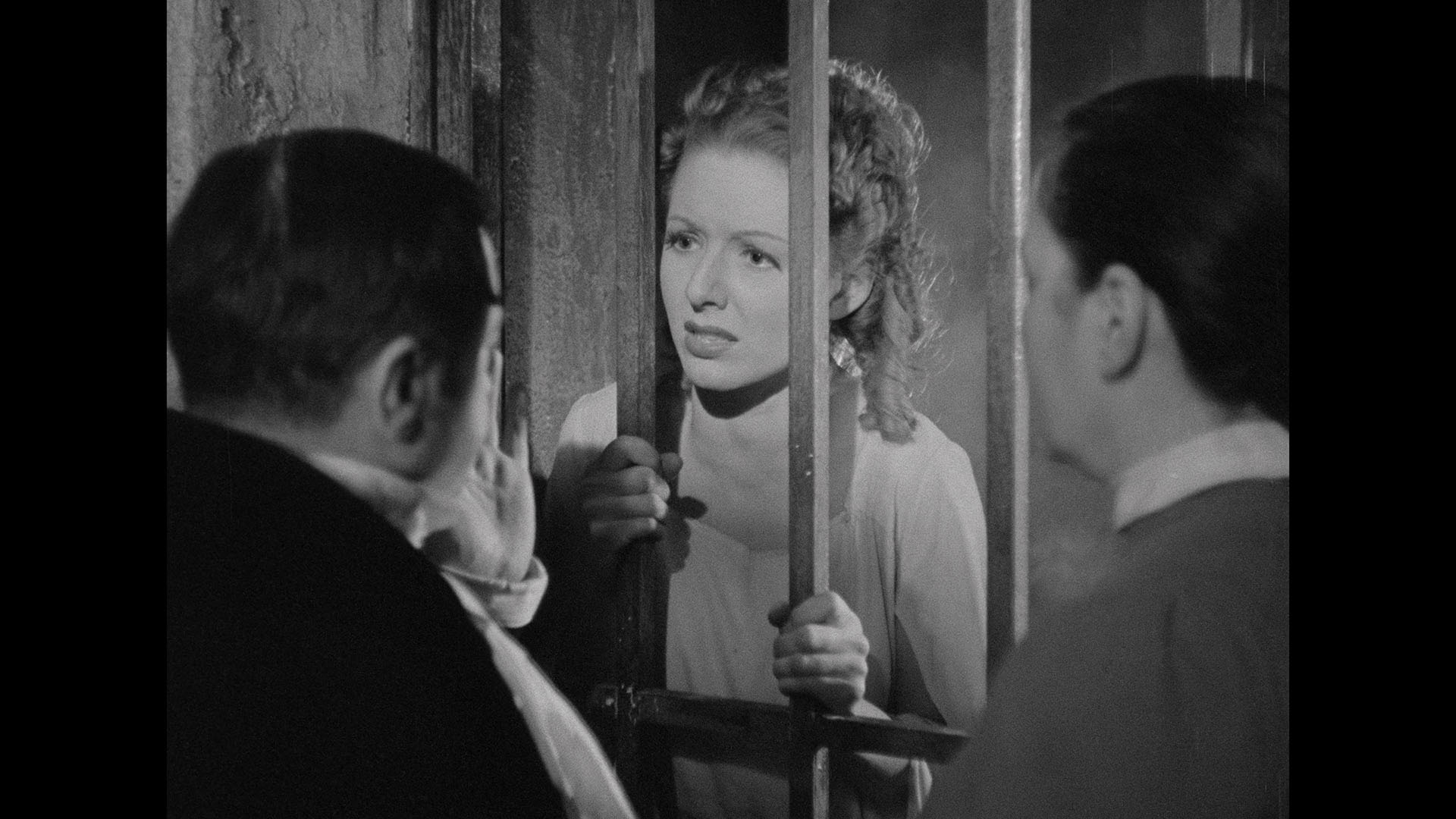 negative scans giving it a classy, stylish quality completely missing before on those fuzzy, battered tape copies. In addition to that indispensable commentary track, the last big extra here is "Full-Blooded" (59m6s), an appreciative and thoughtful appraisal of all eight of these "quota quickies" by Stephen Thrower with a handy study of the progression of sources used for these narratives, the evolution of Slaughter's villainous personae, the public familiarity with many of these before they ever went in front of the cameras, the "Victoriana" craze at the height of Slaughter's popularity, and the shifts in public taste over the course of his career. The box also comes with a 120-page book featuring essays by Jean-Claude Michel, Ania Goszczyńska and David Tibet, and Doug Young and Kip-Xool, excerpts from Slaughter’s unpublished memoirs (used as a primary source for the book Mr. Murder: The Life and Times of Tod Slaughter), and archival essays and reviews.
negative scans giving it a classy, stylish quality completely missing before on those fuzzy, battered tape copies. In addition to that indispensable commentary track, the last big extra here is "Full-Blooded" (59m6s), an appreciative and thoughtful appraisal of all eight of these "quota quickies" by Stephen Thrower with a handy study of the progression of sources used for these narratives, the evolution of Slaughter's villainous personae, the public familiarity with many of these before they ever went in front of the cameras, the "Victoriana" craze at the height of Slaughter's popularity, and the shifts in public taste over the course of his career. The box also comes with a 120-page book featuring essays by Jean-Claude Michel, Ania Goszczyńska and David Tibet, and Doug Young and Kip-Xool, excerpts from Slaughter’s unpublished memoirs (used as a primary source for the book Mr. Murder: The Life and Times of Tod Slaughter), and archival essays and reviews.
Reviewed on November 9, 2023



 height of its monster movie popularity around the world in
height of its monster movie popularity around the world in  the mid-'30s,
the mid-'30s,  tried to squint through all the print damage and blurriness (not to mention scratchy, muffled audio) to enjoy these films that often stretched the definition of what a '30s horror
tried to squint through all the print damage and blurriness (not to mention scratchy, muffled audio) to enjoy these films that often stretched the definition of what a '30s horror  film could actually be. Now Slaughter's peak period can finally be seen in its original, barnstorming majesty with the much-needed 2023 Blu-ray set from Indicator, The Criminal Acts of Tod Slaughter: Eight Blood-and-Thunder Entertainments, 1935-1940 (a limited edition box set of 6,000 numbered units for the U.K. and U.S.) featuring miraculous restorations of the films themselves and extensive extras bound to increase appreciation for this truly unique entertainment figure. For the record, after a hiatus from the screen during World War II, Slaughter made a handful of additional films including two significant horror-ish melodramas, 1946's The Curse of the Wraydons and 1948's The Greed of William Hart, both of which belong to a different rights holder and are out on pretty good U.K. DVD editions.
film could actually be. Now Slaughter's peak period can finally be seen in its original, barnstorming majesty with the much-needed 2023 Blu-ray set from Indicator, The Criminal Acts of Tod Slaughter: Eight Blood-and-Thunder Entertainments, 1935-1940 (a limited edition box set of 6,000 numbered units for the U.K. and U.S.) featuring miraculous restorations of the films themselves and extensive extras bound to increase appreciation for this truly unique entertainment figure. For the record, after a hiatus from the screen during World War II, Slaughter made a handful of additional films including two significant horror-ish melodramas, 1946's The Curse of the Wraydons and 1948's The Greed of William Hart, both of which belong to a different rights holder and are out on pretty good U.K. DVD editions. on the first disc is the role Slaughter played the most frequently over the course of his career (thousands of times, in fact), and the one most
on the first disc is the role Slaughter played the most frequently over the course of his career (thousands of times, in fact), and the one most  famous today for different reasons: 1936's Sweeney Todd: The Demon Barber of Fleet Street. The oft-told tale began as a penny dreadful saga about a razor-wielding barber who disposes of his customers' clients via the meat pie shop owner next door, and it had already been filmed in the silent era and become a stage favorite with Slaughter. Of course, the story would go on to inspire the legendary, Tony Award-winning musical by Stephen Sondheim (and its Tim Burton film adaptation), Andy Milligan's Bloodthirsty Butchers, and a 1997 made-for-cable version by John Schlesinger. This version adheres to the censorship standards of the time by omitting Todd's throat slittings (with unlucky patrons instead dumped directly to a bone-breaking fate through his barber chair trapdoor), and it's oblique about the exact cannibalistic nature of those eventual meat pies. Otherwise it's business as usual with unscrupulous dockside barber Sweeney Todd (Slaughter) becoming fixating on the young and pretty Joanna (Lister). While her boyfriend sailor Mark (Seton) is away at sea, Todd initiates a plan to line his pockets by luring in and killing wealthy customers to his Fleet Street stop, fleecing the bodies of any money or valuables, and using the shared basement with meat pie purveyor Mrs. Lovatt (Rho) (Lovett in other versions) to dispose of the evidence. Covering up his crimes proves to be tricky, especially when it comes to young barber apprentice Tobias (Singer) and a returning Mark who proves surprisingly resilient to any murder attempts.
famous today for different reasons: 1936's Sweeney Todd: The Demon Barber of Fleet Street. The oft-told tale began as a penny dreadful saga about a razor-wielding barber who disposes of his customers' clients via the meat pie shop owner next door, and it had already been filmed in the silent era and become a stage favorite with Slaughter. Of course, the story would go on to inspire the legendary, Tony Award-winning musical by Stephen Sondheim (and its Tim Burton film adaptation), Andy Milligan's Bloodthirsty Butchers, and a 1997 made-for-cable version by John Schlesinger. This version adheres to the censorship standards of the time by omitting Todd's throat slittings (with unlucky patrons instead dumped directly to a bone-breaking fate through his barber chair trapdoor), and it's oblique about the exact cannibalistic nature of those eventual meat pies. Otherwise it's business as usual with unscrupulous dockside barber Sweeney Todd (Slaughter) becoming fixating on the young and pretty Joanna (Lister). While her boyfriend sailor Mark (Seton) is away at sea, Todd initiates a plan to line his pockets by luring in and killing wealthy customers to his Fleet Street stop, fleecing the bodies of any money or valuables, and using the shared basement with meat pie purveyor Mrs. Lovatt (Rho) (Lovett in other versions) to dispose of the evidence. Covering up his crimes proves to be tricky, especially when it comes to young barber apprentice Tobias (Singer) and a returning Mark who proves surprisingly resilient to any murder attempts. The
The  detail levels, inky blacks, and radically improved sound (LPCM 1.0 English mono with welcome English SDH subtitles) all make these great fun to watch, and even those who dismissed them in the past would be wise to give them another shot under these conditions. A new audio commentary by Josephine Botting and Vic Pratt for Maria Marten is enthusiastic and informative with plenty of information about the true crime source, the original play, and the theatrical traditions carried over for this rendition, as well as background about Rosmer and the star. A new commentary by Stephen Jones and Kim Newman for Sweeney Todd is also lively and up to the same standard, parsing through the history of the butchering barber, Victorian stage traditions that made him famous, and comparisons to other versions before and after. "The Long Shadow" (10m23s) is a new interview with artist- illustrator Ania Goszczyńska and Current 93 channeler-trance scribbler David Tibet about their longtime admiration for Slaughter's work, the appeal of that era of art and performance, and the appeal of these stories often culled from real crimes and folklore. Then you get four-act audio plays of Maria Martens and Sweeney Todd from the early '30s featuring Slaughter and an orchestra, jamming the whole thing into 13m7s and 12m28s respectively, or alternate versions with music by Current 93. Also included are separate image galleries for Maria Martens (17 images) and Sweeney Todd (46 images), followed by four really fascinating Slaughter-oriented short films. 1936's Tod Slaughter at Home (4m7s) is a fun, hammy staged interview with Sweeney Todd, recorded for the Pathétone newsreel, including a jokey punchline at the end. 1938's Pots of Plots (3m51s) is a flamboyant promo short for Slaughter, seen at his makeup table while three of his fictional alter egos appear around him. 1946's Bothered by a Beard (35m1s) is a funny Gaumont instructional short about the history of men's barbers and shaving, with some crazy beards on display and a Slaughter cameo as Sweeney Todd (in a much nuttier wig than before). Finally 1954's Puzzle Corner No. 14 (19m12s) goes in the history books as the star's last appearance on film, offering an English tour starting at Southampton and then cruising through some historical landmarks including a stop where Slaughter does his menacing
detail levels, inky blacks, and radically improved sound (LPCM 1.0 English mono with welcome English SDH subtitles) all make these great fun to watch, and even those who dismissed them in the past would be wise to give them another shot under these conditions. A new audio commentary by Josephine Botting and Vic Pratt for Maria Marten is enthusiastic and informative with plenty of information about the true crime source, the original play, and the theatrical traditions carried over for this rendition, as well as background about Rosmer and the star. A new commentary by Stephen Jones and Kim Newman for Sweeney Todd is also lively and up to the same standard, parsing through the history of the butchering barber, Victorian stage traditions that made him famous, and comparisons to other versions before and after. "The Long Shadow" (10m23s) is a new interview with artist- illustrator Ania Goszczyńska and Current 93 channeler-trance scribbler David Tibet about their longtime admiration for Slaughter's work, the appeal of that era of art and performance, and the appeal of these stories often culled from real crimes and folklore. Then you get four-act audio plays of Maria Martens and Sweeney Todd from the early '30s featuring Slaughter and an orchestra, jamming the whole thing into 13m7s and 12m28s respectively, or alternate versions with music by Current 93. Also included are separate image galleries for Maria Martens (17 images) and Sweeney Todd (46 images), followed by four really fascinating Slaughter-oriented short films. 1936's Tod Slaughter at Home (4m7s) is a fun, hammy staged interview with Sweeney Todd, recorded for the Pathétone newsreel, including a jokey punchline at the end. 1938's Pots of Plots (3m51s) is a flamboyant promo short for Slaughter, seen at his makeup table while three of his fictional alter egos appear around him. 1946's Bothered by a Beard (35m1s) is a funny Gaumont instructional short about the history of men's barbers and shaving, with some crazy beards on display and a Slaughter cameo as Sweeney Todd (in a much nuttier wig than before). Finally 1954's Puzzle Corner No. 14 (19m12s) goes in the history books as the star's last appearance on film, offering an English tour starting at Southampton and then cruising through some historical landmarks including a stop where Slaughter does his menacing  barber
barber  routine.
routine.  If you want to see a really prototypical Tod Slaughter movie, this would be the one. It seems designed to give the star as
If you want to see a really prototypical Tod Slaughter movie, this would be the one. It seems designed to give the star as  many opportunities as possible to bump off people in the first act (including some who would normally be off limits in stories like this) before he gets to really flex his acting muscles and even earn a weird sort of audience sympathy by the end. Foggy evenings, jail scuffles, screaming victims, and a great climax make this one another winner, and King makes this outing a tad more cinematic with some more artful use of shadows and sound effects (including some grisly off-screen murder sequences). This one also may hold a place in the history books for the first movie use of "The Colonel Bogey March," which gets placed prominently here and would later up in Hitchcock's 1938 The Lady Vanishes before finding its most famous incarnation in The Bridge on the River Kwai.
many opportunities as possible to bump off people in the first act (including some who would normally be off limits in stories like this) before he gets to really flex his acting muscles and even earn a weird sort of audience sympathy by the end. Foggy evenings, jail scuffles, screaming victims, and a great climax make this one another winner, and King makes this outing a tad more cinematic with some more artful use of shadows and sound effects (including some grisly off-screen murder sequences). This one also may hold a place in the history books for the first movie use of "The Colonel Bogey March," which gets placed prominently here and would later up in Hitchcock's 1938 The Lady Vanishes before finding its most famous incarnation in The Bridge on the River Kwai. Meadows has his eye on another young woman here, Susan (Taylor again), who instead loves a poor young farmer, George (Colin) -- who
Meadows has his eye on another young woman here, Susan (Taylor again), who instead loves a poor young farmer, George (Colin) -- who  might be next in line for Meadows' vengeful methods, unless his best friend Tom (Livesey) gets roped in instead.
might be next in line for Meadows' vengeful methods, unless his best friend Tom (Livesey) gets roped in instead.  Newman for a great new track for The Crimes of Stephen Hawke, explaining that oddball opening in detail and
Newman for a great new track for The Crimes of Stephen Hawke, explaining that oddball opening in detail and  pulling apart all the details of this brisk third entry in the cycle (by which point it had also amassed a sort of repertory theater company and running set of motifs). Kevin Lyons and Jonathan Rigby tackle It's Never Too Late to Mend wonderfully as well, providing plenty of info about as many character actors as they can (even though most of them are uncredited), noting the connections to its source novel, explaining the unusual release situation, and noting connections to other Slaughter screen and stage roles. Also included are image galleries for both films (12 images each) and a delightfully lurid script treatment for Stephen Hawke, plus the 1926 short film London After Dark (7m12s), silent or with a Current 93 score, featuring the earliest existing footage of Slaughter on stage at the Elephant and Castle Theatre.
pulling apart all the details of this brisk third entry in the cycle (by which point it had also amassed a sort of repertory theater company and running set of motifs). Kevin Lyons and Jonathan Rigby tackle It's Never Too Late to Mend wonderfully as well, providing plenty of info about as many character actors as they can (even though most of them are uncredited), noting the connections to its source novel, explaining the unusual release situation, and noting connections to other Slaughter screen and stage roles. Also included are image galleries for both films (12 images each) and a delightfully lurid script treatment for Stephen Hawke, plus the 1926 short film London After Dark (7m12s), silent or with a Current 93 score, featuring the earliest existing footage of Slaughter on stage at the Elephant and Castle Theatre.  good as soon as the opening credits wrap, scampering out of a house he's been robbing on a foggy evening and garroting a guard for his trouble.
good as soon as the opening credits wrap, scampering out of a house he's been robbing on a foggy evening and garroting a guard for his trouble.  Expanded and vamped up a bit from an 1863 play, it stars Slaughter as The Tiger, who moves in civilized society we all meet during a nighttime tea garden soiree featuring entertainment by singer May Edwards (Taylor, of course). Her boyfriend is ex-con Bob Brierly (Warwick), who's about to start an entry level job at a bank. Of course The Tiger, eager to get his counterfeiting scheme off the ground, arranges to frame Robert for his misdeeds, but even a prison sentence can't fully shake the detective in charge, Hawkshaw (Adair), from thinking something is still amiss.
Expanded and vamped up a bit from an 1863 play, it stars Slaughter as The Tiger, who moves in civilized society we all meet during a nighttime tea garden soiree featuring entertainment by singer May Edwards (Taylor, of course). Her boyfriend is ex-con Bob Brierly (Warwick), who's about to start an entry level job at a bank. Of course The Tiger, eager to get his counterfeiting scheme off the ground, arranges to frame Robert for his misdeeds, but even a prison sentence can't fully shake the detective in charge, Hawkshaw (Adair), from thinking something is still amiss.  grotesque villains with gimmicky names and elaborate criminal plots a la Sax Rohmer and Ian Fleming. Here Slaughter splits top billing with George Curzon, in his third, last, and most widely
grotesque villains with gimmicky names and elaborate criminal plots a la Sax Rohmer and Ian Fleming. Here Slaughter splits top billing with George Curzon, in his third, last, and most widely  seen excursion as Sexton Blake; Curzon also appeared in several '30s Hitchcock films, most memorably as that very important "drummer man" in Young and Innocent. Slaughter dials it down just a tad here as wicked stamp collector and arch villain Michael Larron, whose organization earns its title of "The Hooded Terror" since he organizes his lackeys in smoke-filled meetings where he wears a hood and robe with a big shiny snake insignia. Sexton is tipped off when the Hooded Terror strikes down another British agent, Granite Grant, played in one of his first significant role by future Black Narcissus star and screen heartthrob David Farrar (who oddly enough went on to star in 1945's Meet Sexton Blake and The Echo Murders as Blake himself). Can our resourceful sleuth get to the bottom of the underground plot before London is plunged into a nightmare? What do you think?
seen excursion as Sexton Blake; Curzon also appeared in several '30s Hitchcock films, most memorably as that very important "drummer man" in Young and Innocent. Slaughter dials it down just a tad here as wicked stamp collector and arch villain Michael Larron, whose organization earns its title of "The Hooded Terror" since he organizes his lackeys in smoke-filled meetings where he wears a hood and robe with a big shiny snake insignia. Sexton is tipped off when the Hooded Terror strikes down another British agent, Granite Grant, played in one of his first significant role by future Black Narcissus star and screen heartthrob David Farrar (who oddly enough went on to star in 1945's Meet Sexton Blake and The Echo Murders as Blake himself). Can our resourceful sleuth get to the bottom of the underground plot before London is plunged into a nightmare? What do you think? dupe positive. It's still vastly superior than any version we've had before, with only the heavier amount of grain and some rough
dupe positive. It's still vastly superior than any version we've had before, with only the heavier amount of grain and some rough  dissolves knocked it down here compared to the titles before it. Josephine Botting and Dave Thomas do the commentary honors on The Ticket of Leave Man, doing a skillful job of laying out the many embellishments created here compared to the stage play and covering all the essentials about the cast and crew. Then Newman and Stephen Jones provide the commentary for Hooded Terror with extensive coverage of the history behind Sexton Blake, his connections to other literary crime fighters, the backgrounds of the cast members, and the elements that make this stand out versus the other Slaughter films. In "Shock Factor" (11m19s), great-niece Imogen Slaughter and her father Giles (Tod's nephew) deliver new interviews about their legendary relative's life and career including his perception within the family, who weren't exactly approving of a theater career at the time. You also get a look at one of Slaughter's few recovered key possessions, which is a real treat to see. "Slaughter's Stock" (12m12s): video essay by Michael Brooke on the cavalcade of repertory players in these films, who were mandated by King since most of the players in Slaughter's theatrical productions had aged out by the time these films got off the ground. You'll find out about plenty of multiple and one-off key players here including scene stealer D.J. Williams and tons of others. Also included are image galleries (13 and 9 shots
dissolves knocked it down here compared to the titles before it. Josephine Botting and Dave Thomas do the commentary honors on The Ticket of Leave Man, doing a skillful job of laying out the many embellishments created here compared to the stage play and covering all the essentials about the cast and crew. Then Newman and Stephen Jones provide the commentary for Hooded Terror with extensive coverage of the history behind Sexton Blake, his connections to other literary crime fighters, the backgrounds of the cast members, and the elements that make this stand out versus the other Slaughter films. In "Shock Factor" (11m19s), great-niece Imogen Slaughter and her father Giles (Tod's nephew) deliver new interviews about their legendary relative's life and career including his perception within the family, who weren't exactly approving of a theater career at the time. You also get a look at one of Slaughter's few recovered key possessions, which is a real treat to see. "Slaughter's Stock" (12m12s): video essay by Michael Brooke on the cavalcade of repertory players in these films, who were mandated by King since most of the players in Slaughter's theatrical productions had aged out by the time these films got off the ground. You'll find out about plenty of multiple and one-off key players here including scene stealer D.J. Williams and tons of others. Also included are image galleries (13 and 9 shots  respectively).
respectively).  Finally on disc four we get to one of the best-loved Slaughter films and the most outright horrific of the bunch, the Universal-esque The Face at the Window. Here we travel to "France 1880 - A series of unsolved murders - A country panic-stricken - Fantastic stories of Le Loup - A wolf man. A wave of terror which inspired this melodrama of the old school - dear to the hearts of all who unashamedly enjoy either a shudder or a laugh at the heights of villainy." At least that's how the opening crawl puts it. A howl in the dead of night leaves a man mysteriously dead after he says only one clue, the title of the film itself. The deceased, Michel, worked for the Brisson Bank who have been robbed of a major gold reserve, so the owner enlists Chevalier Lucio del Gardo (Slaughter) to use his wealth and power to restore solvency and trust to the bank. However, the rich savior wants to marry Cecile de Brisson (Taylor) as part of the deal, and her heart belongs to the bank teller who aurally witnessed the crime, Lucien (Warwick). Of course, the Chevalier isn't pleased at the situation and comes up with a plan to have Cecile for himself-- while the murders continue with a monstrous face appearing at the scene of the crime...
Finally on disc four we get to one of the best-loved Slaughter films and the most outright horrific of the bunch, the Universal-esque The Face at the Window. Here we travel to "France 1880 - A series of unsolved murders - A country panic-stricken - Fantastic stories of Le Loup - A wolf man. A wave of terror which inspired this melodrama of the old school - dear to the hearts of all who unashamedly enjoy either a shudder or a laugh at the heights of villainy." At least that's how the opening crawl puts it. A howl in the dead of night leaves a man mysteriously dead after he says only one clue, the title of the film itself. The deceased, Michel, worked for the Brisson Bank who have been robbed of a major gold reserve, so the owner enlists Chevalier Lucio del Gardo (Slaughter) to use his wealth and power to restore solvency and trust to the bank. However, the rich savior wants to marry Cecile de Brisson (Taylor) as part of the deal, and her heart belongs to the bank teller who aurally witnessed the crime, Lucien (Warwick). Of course, the Chevalier isn't pleased at the situation and comes up with a plan to have Cecile for himself-- while the murders continue with a monstrous face appearing at the scene of the crime... Bret Wood.
Bret Wood.  The same excellent source (cited here simply as a 4K scan, not quite as crisp as the best presentations in the set but no slouch at all) is ported over for the Indicator disc, this time with an equally solid track by Kevin Lyons and Jonathan Rigby who start off on an appropriately ripe note and have plenty to offer about the variations from the play source, the horror elements, and the little narrative reversals here that make this one unique.
The same excellent source (cited here simply as a 4K scan, not quite as crisp as the best presentations in the set but no slouch at all) is ported over for the Indicator disc, this time with an equally solid track by Kevin Lyons and Jonathan Rigby who start off on an appropriately ripe note and have plenty to offer about the variations from the play source, the horror elements, and the little narrative reversals here that make this one unique.  plummy dialogue and prime Slaughter-isms making this one far more satisfying as a vehicle for its leading man than a mystery adaptation.
plummy dialogue and prime Slaughter-isms making this one far more satisfying as a vehicle for its leading man than a mystery adaptation. negative scans giving it a classy, stylish quality completely missing before on those fuzzy, battered tape copies. In addition to that indispensable commentary track, the last big extra here is "Full-Blooded" (59m6s), an appreciative and thoughtful appraisal of all eight of these "quota quickies" by Stephen Thrower with a handy study of the progression of sources used for these narratives, the evolution of Slaughter's villainous personae, the public familiarity with many of these before they ever went in front of the cameras, the "Victoriana" craze at the height of Slaughter's popularity, and the shifts in public taste over the course of his career. The box also comes with a 120-page book featuring essays by Jean-Claude Michel, Ania Goszczyńska and David Tibet, and Doug Young and Kip-Xool, excerpts from Slaughter’s unpublished memoirs (used as a primary source for the book Mr. Murder: The Life and Times of Tod Slaughter), and archival essays and reviews.
negative scans giving it a classy, stylish quality completely missing before on those fuzzy, battered tape copies. In addition to that indispensable commentary track, the last big extra here is "Full-Blooded" (59m6s), an appreciative and thoughtful appraisal of all eight of these "quota quickies" by Stephen Thrower with a handy study of the progression of sources used for these narratives, the evolution of Slaughter's villainous personae, the public familiarity with many of these before they ever went in front of the cameras, the "Victoriana" craze at the height of Slaughter's popularity, and the shifts in public taste over the course of his career. The box also comes with a 120-page book featuring essays by Jean-Claude Michel, Ania Goszczyńska and David Tibet, and Doug Young and Kip-Xool, excerpts from Slaughter’s unpublished memoirs (used as a primary source for the book Mr. Murder: The Life and Times of Tod Slaughter), and archival essays and reviews.